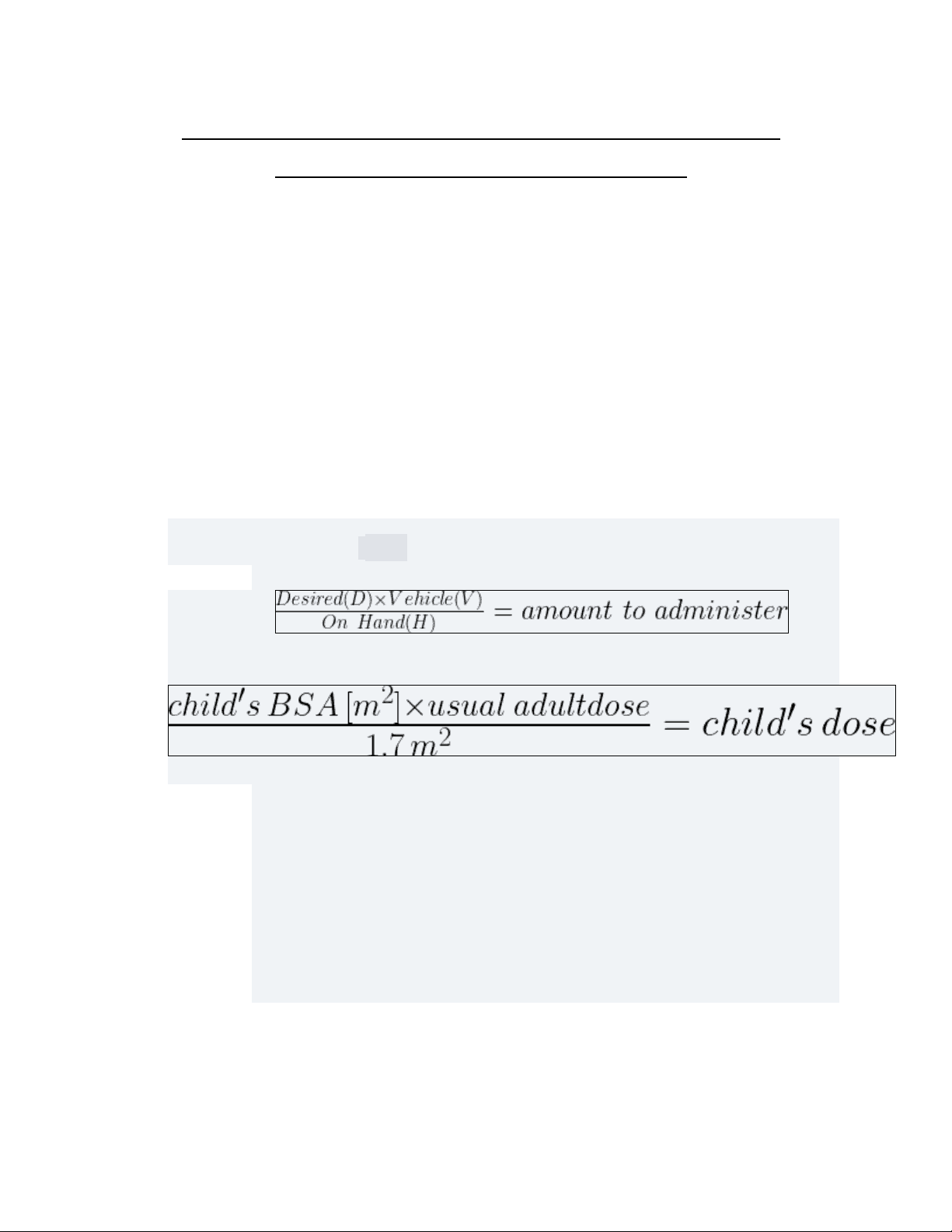
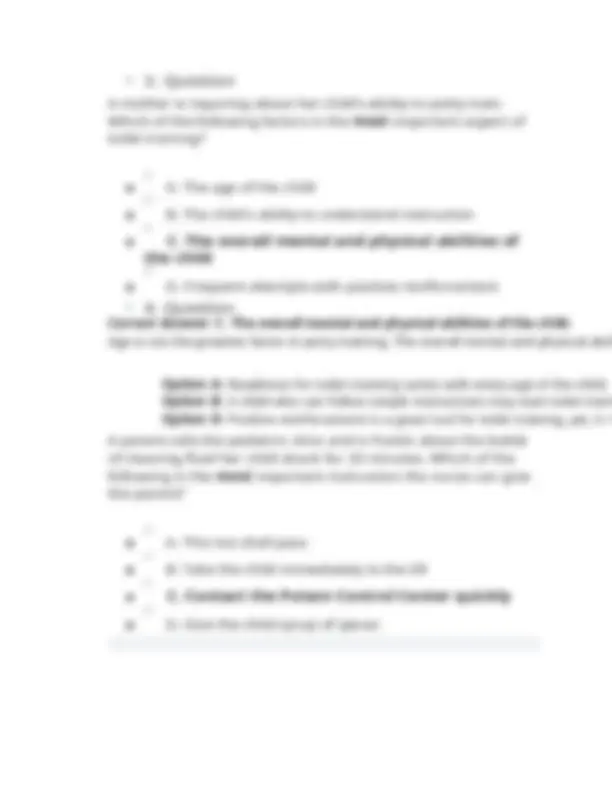
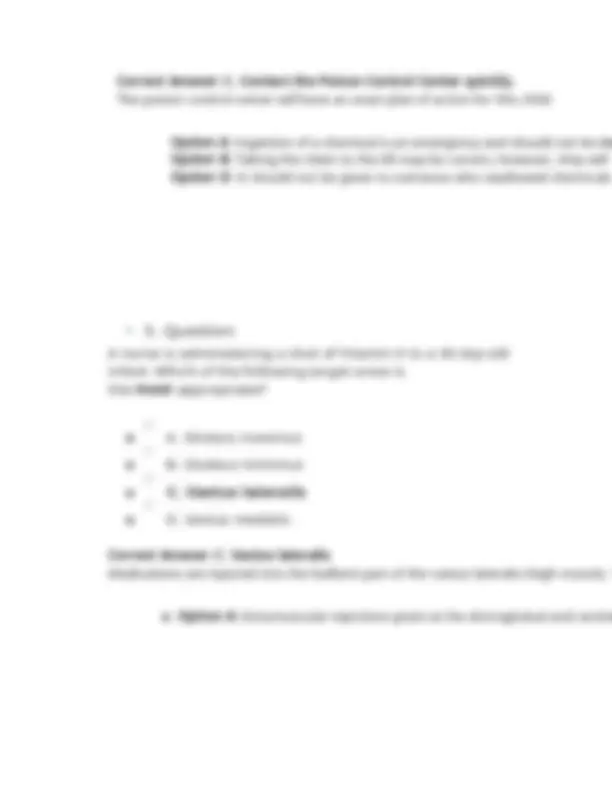
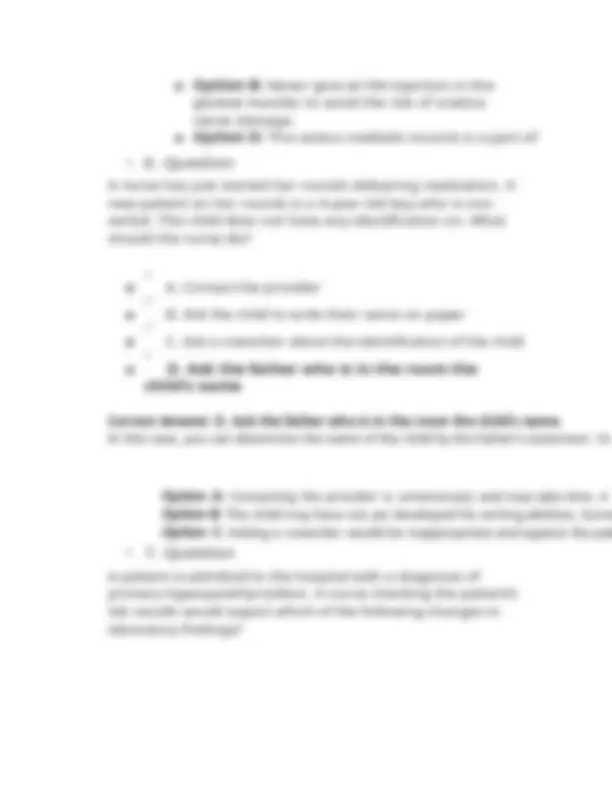
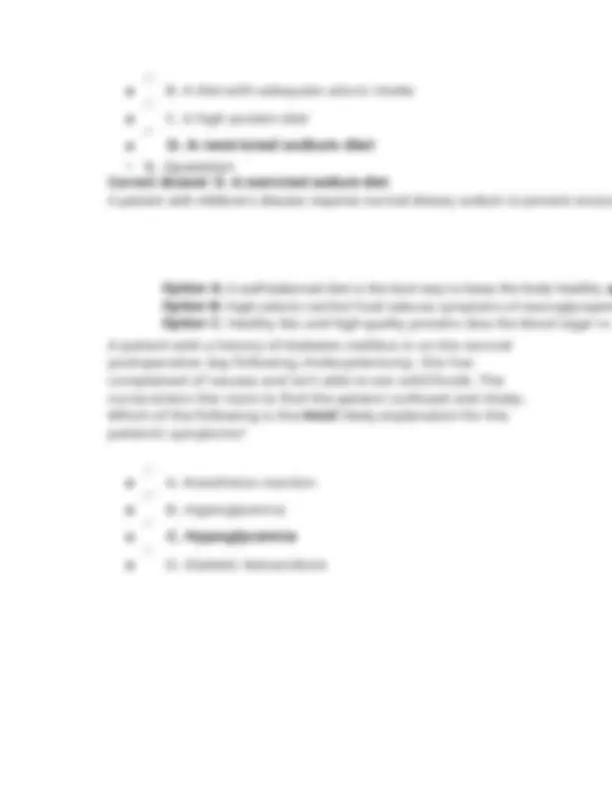
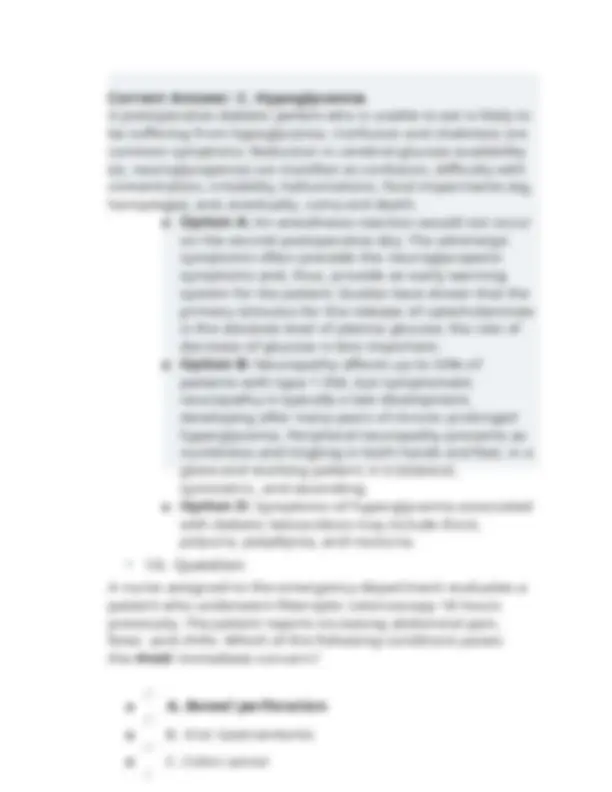
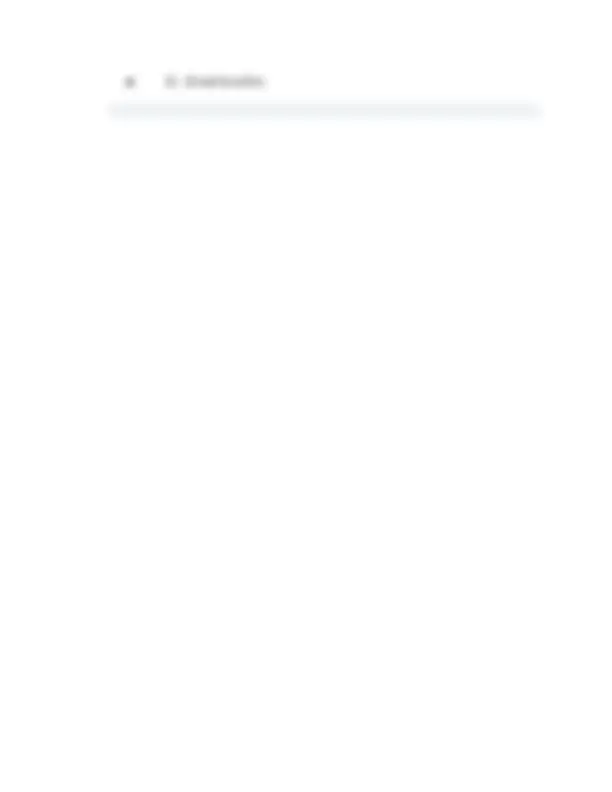
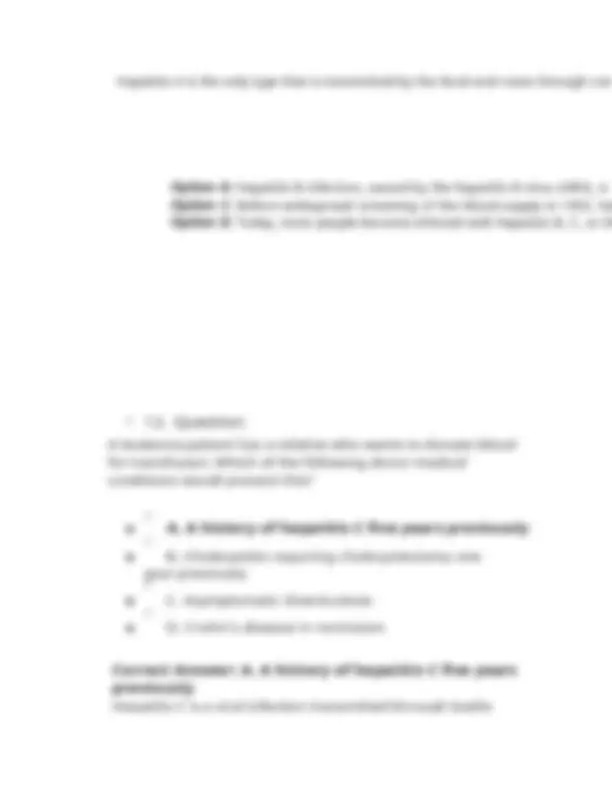
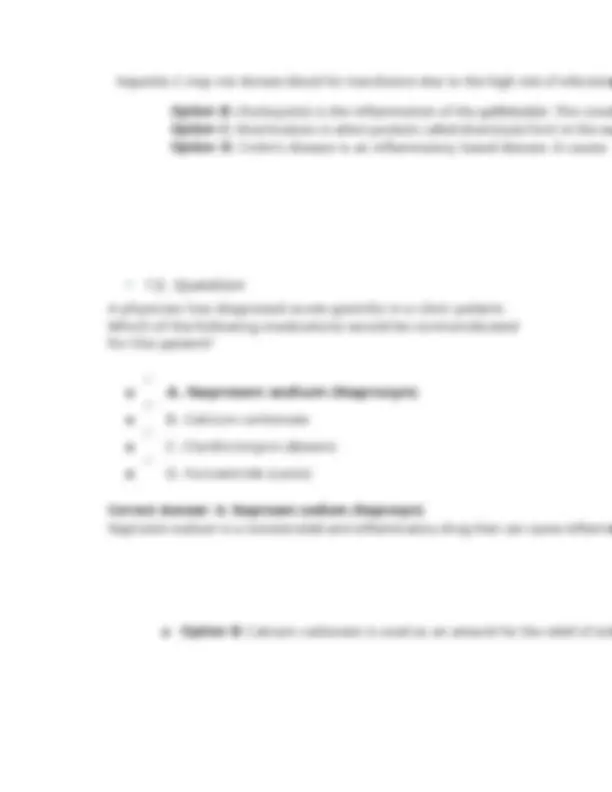
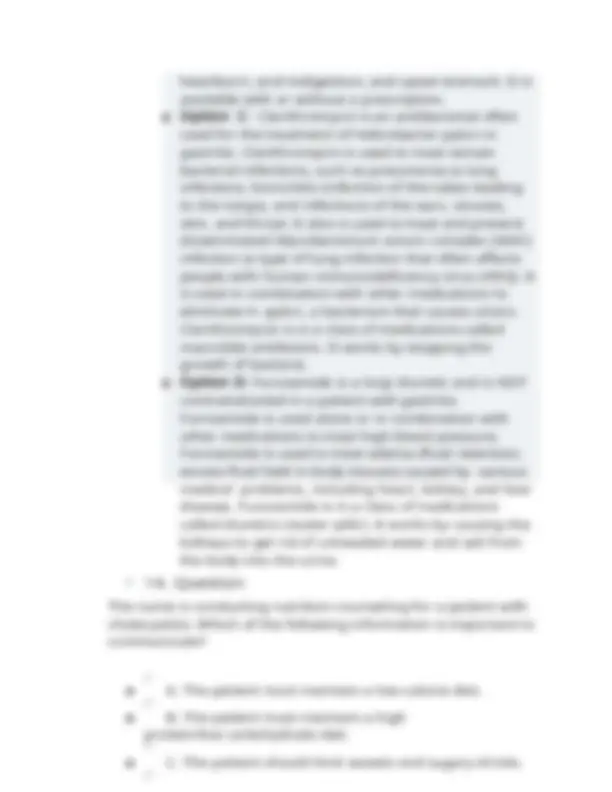
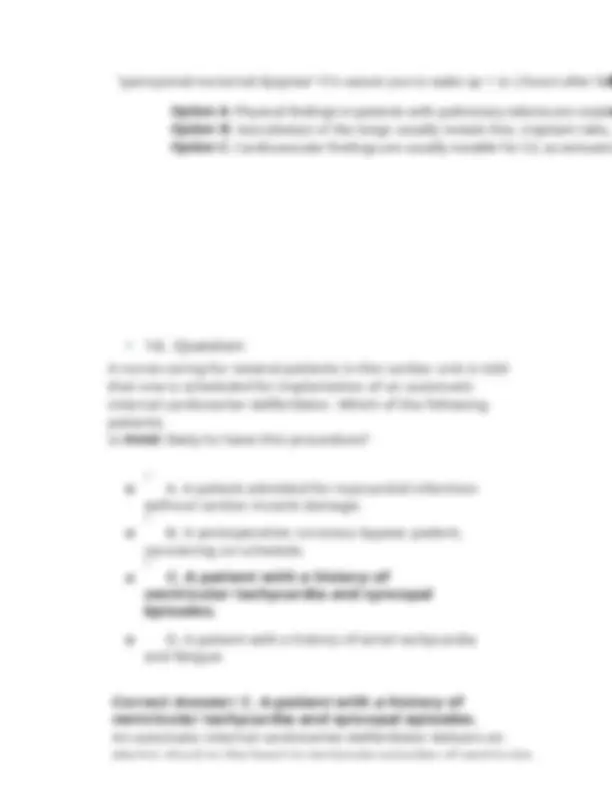
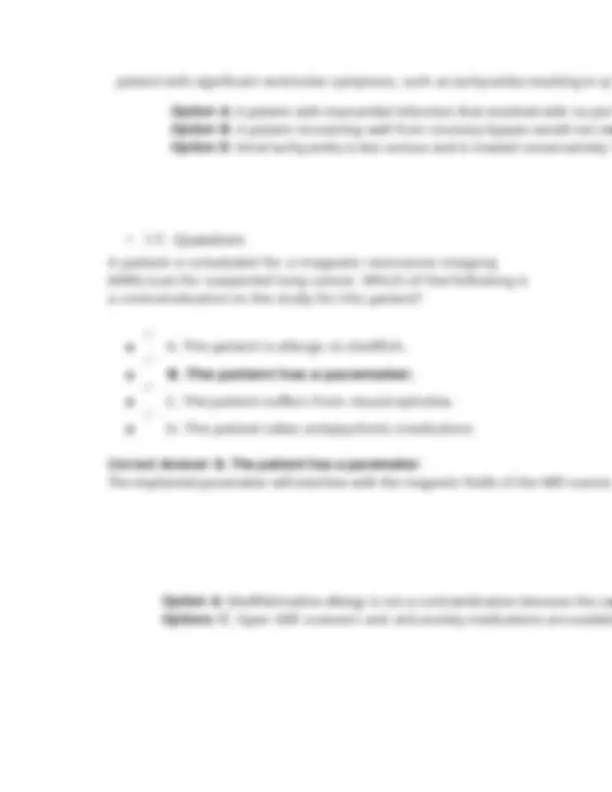
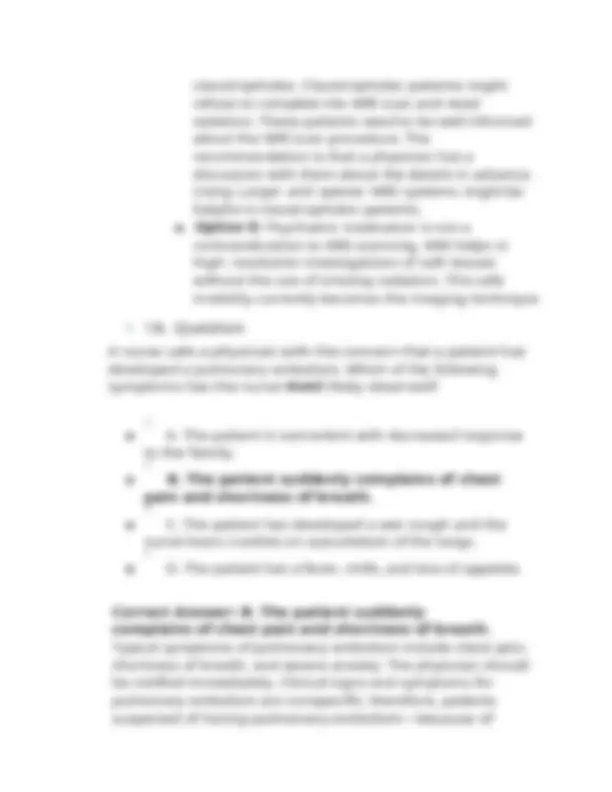
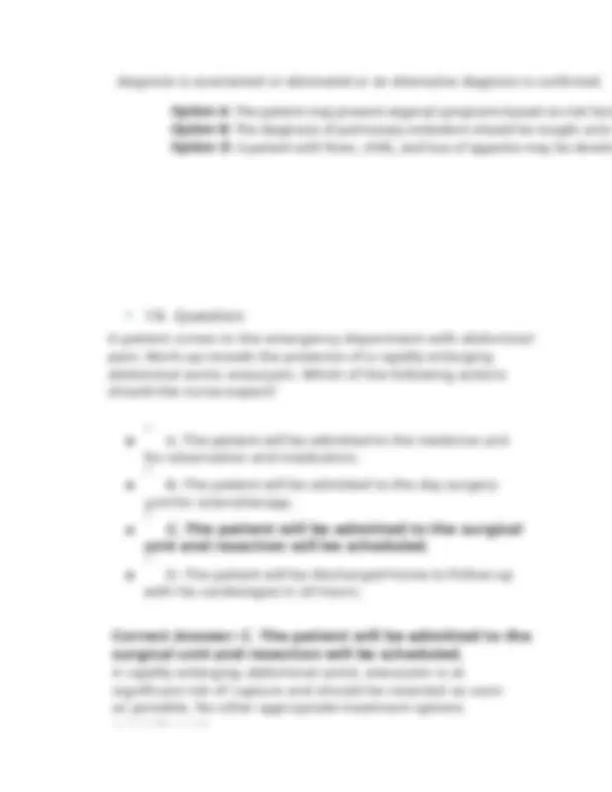
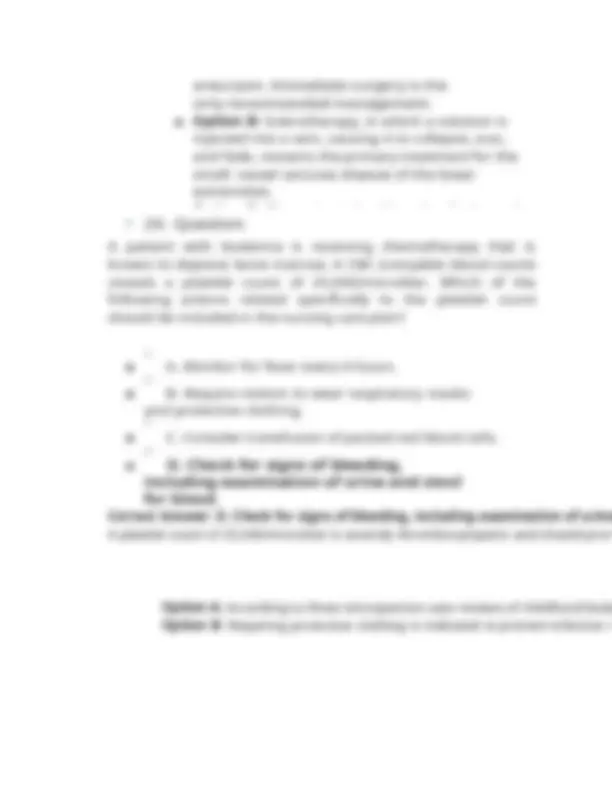
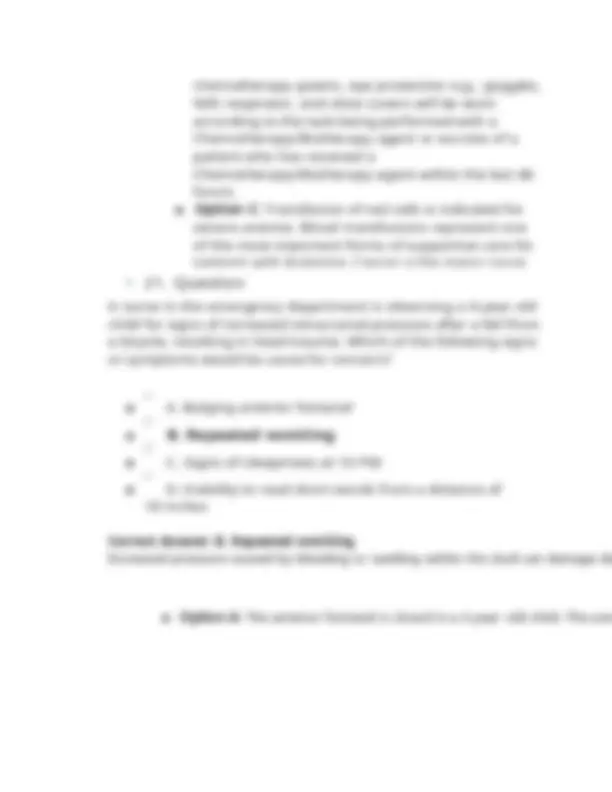
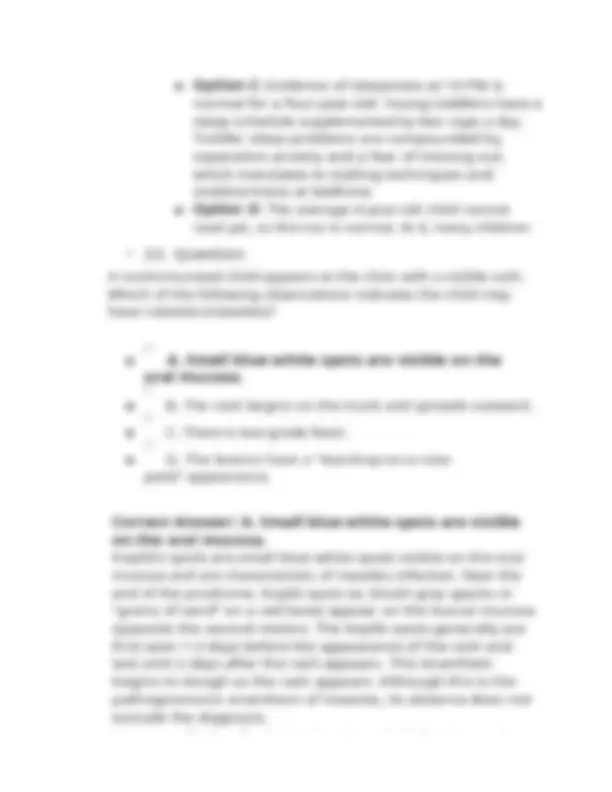
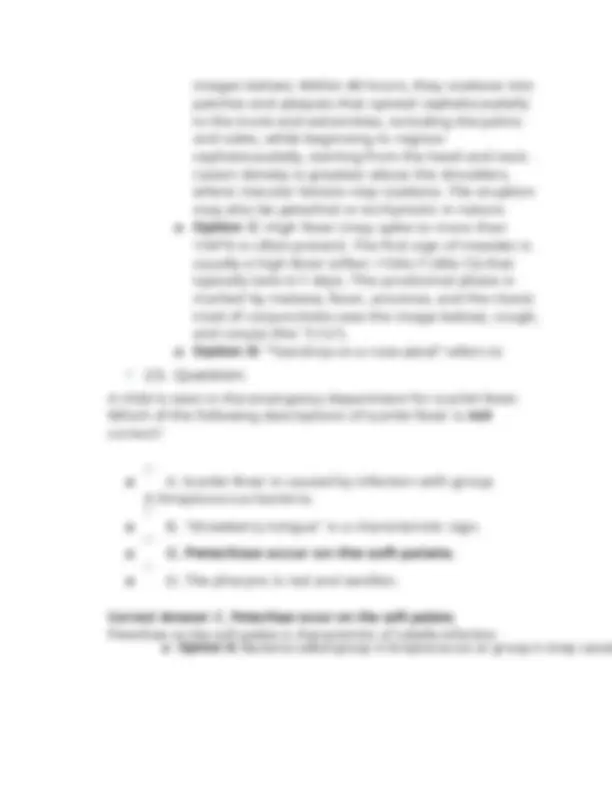
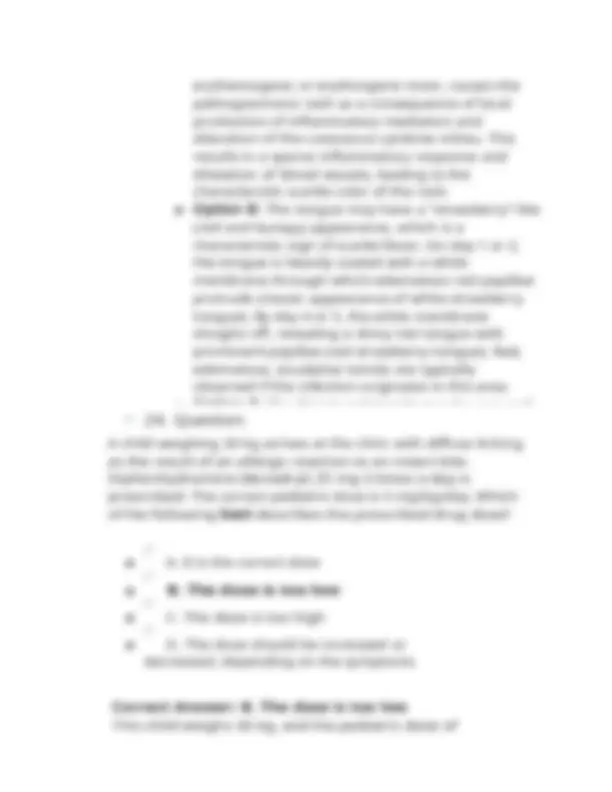
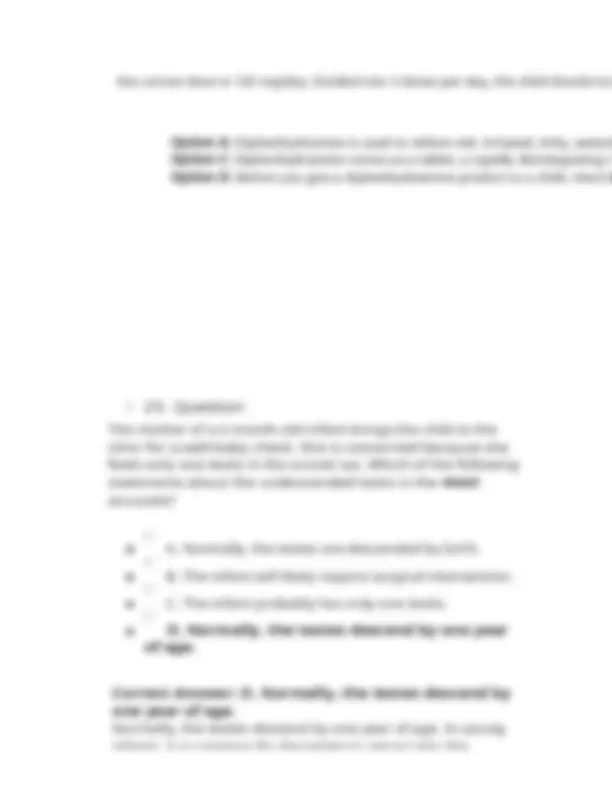
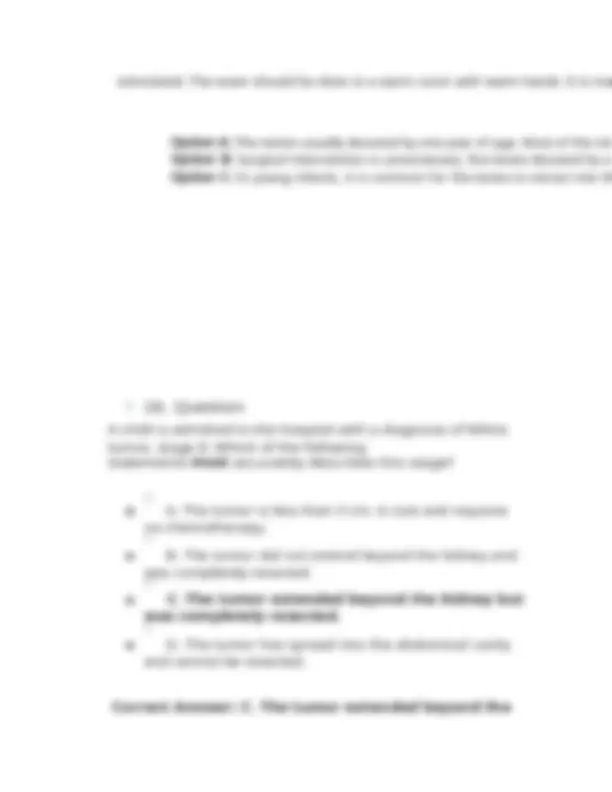
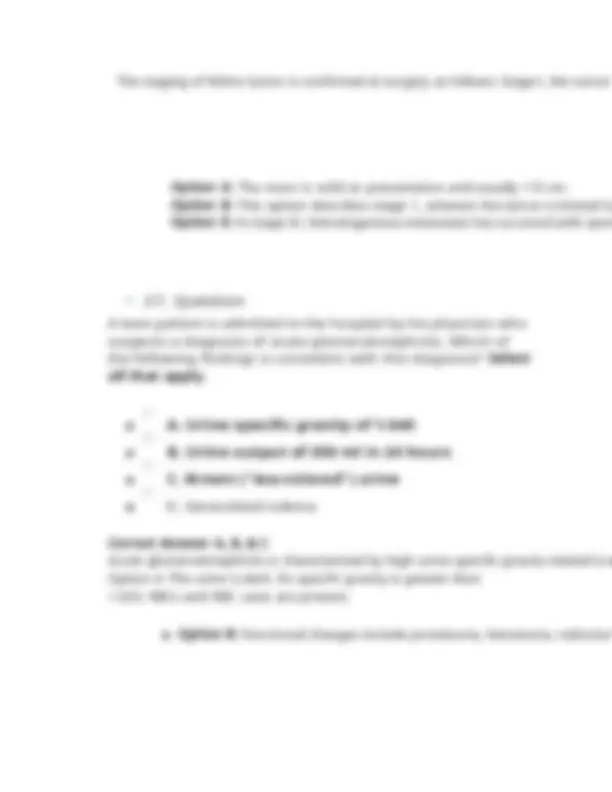
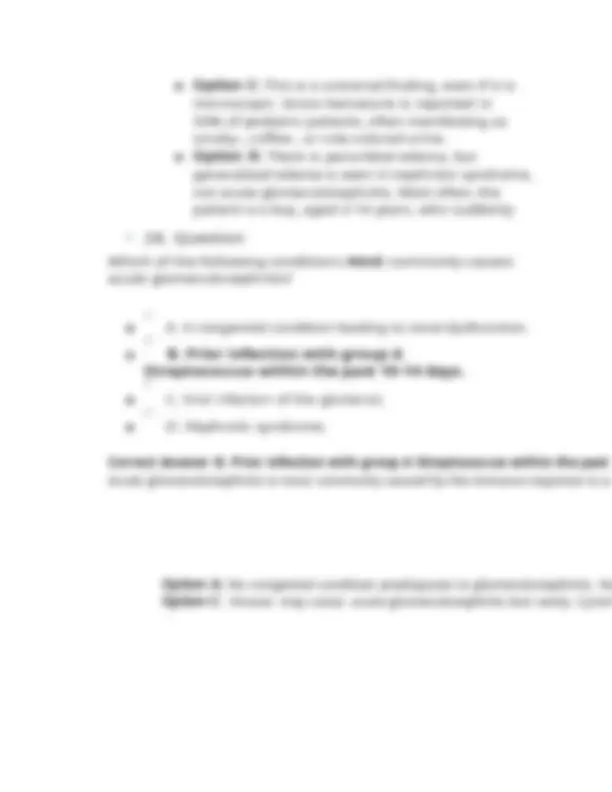
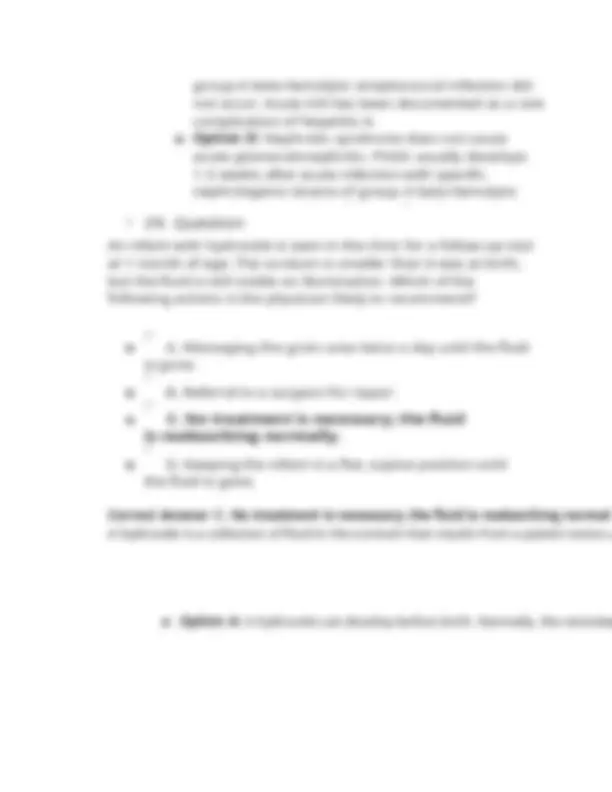
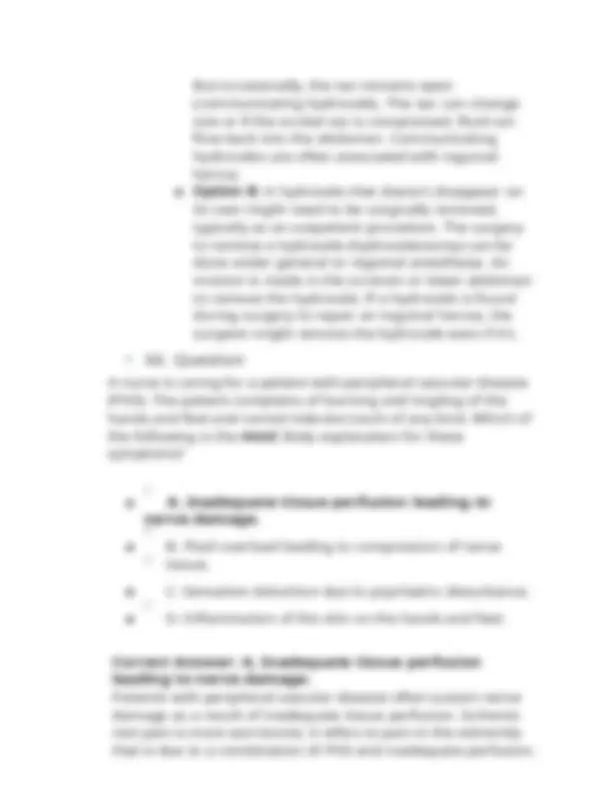
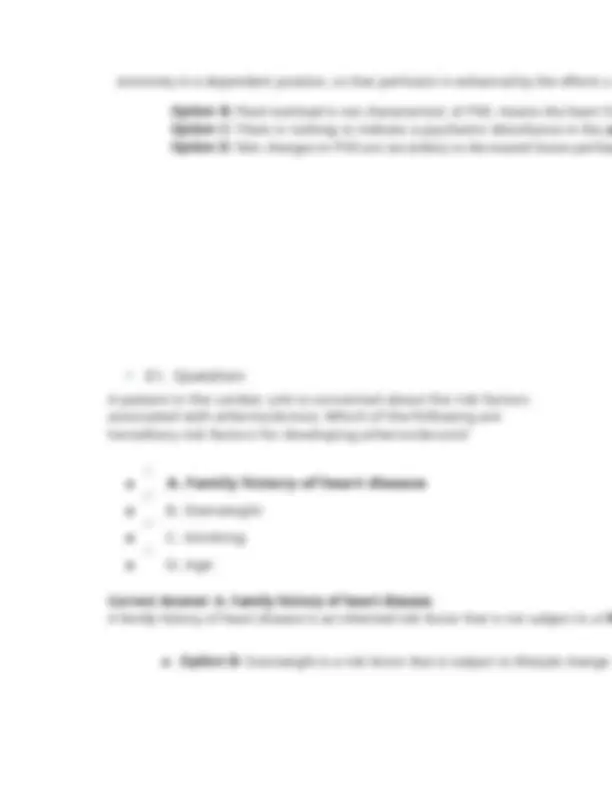
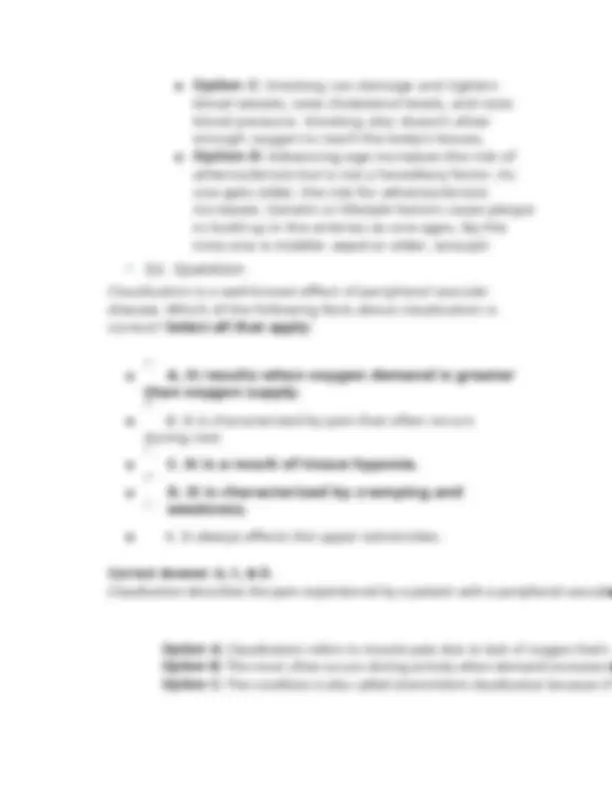
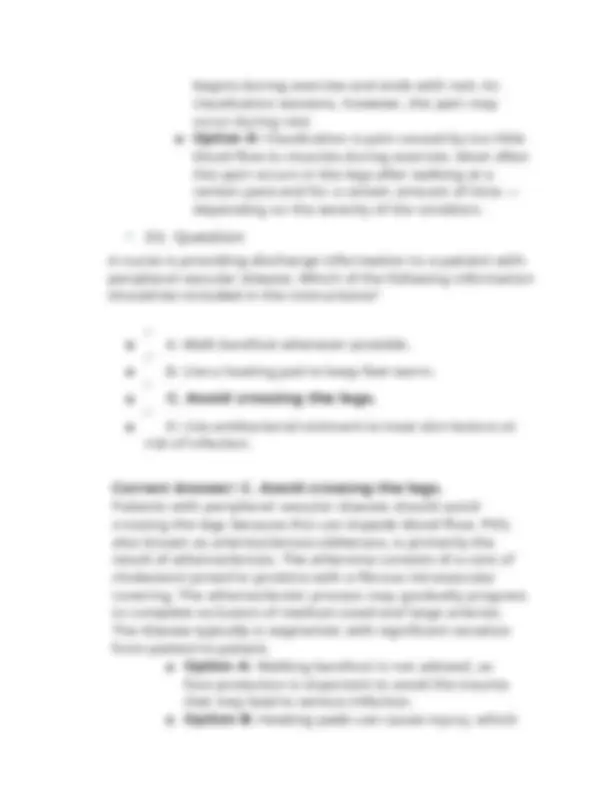
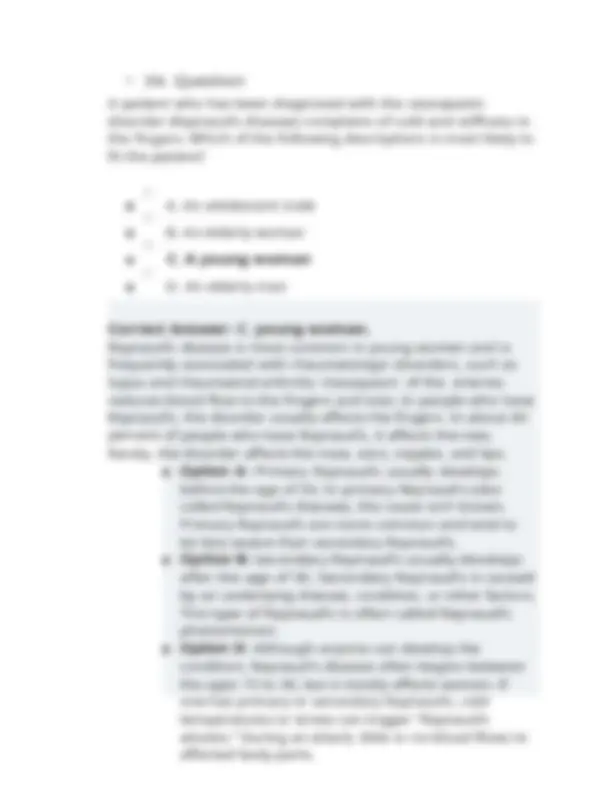
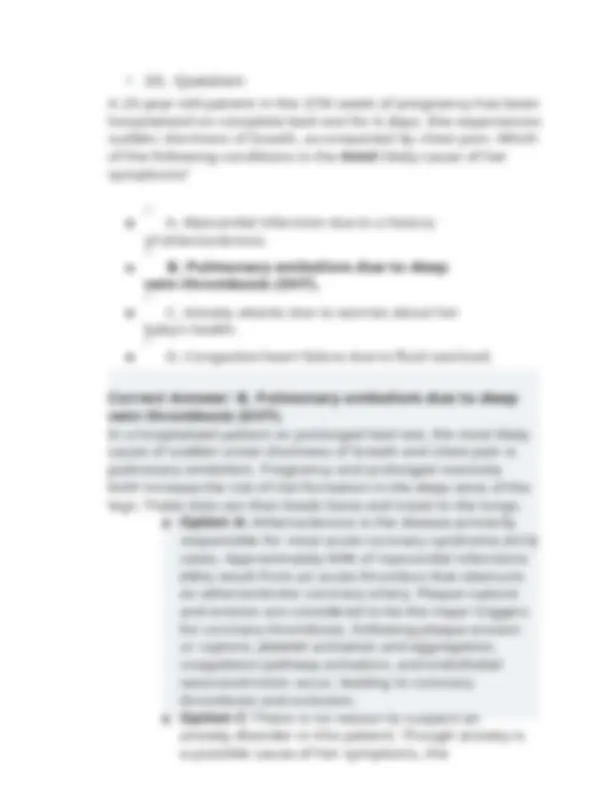
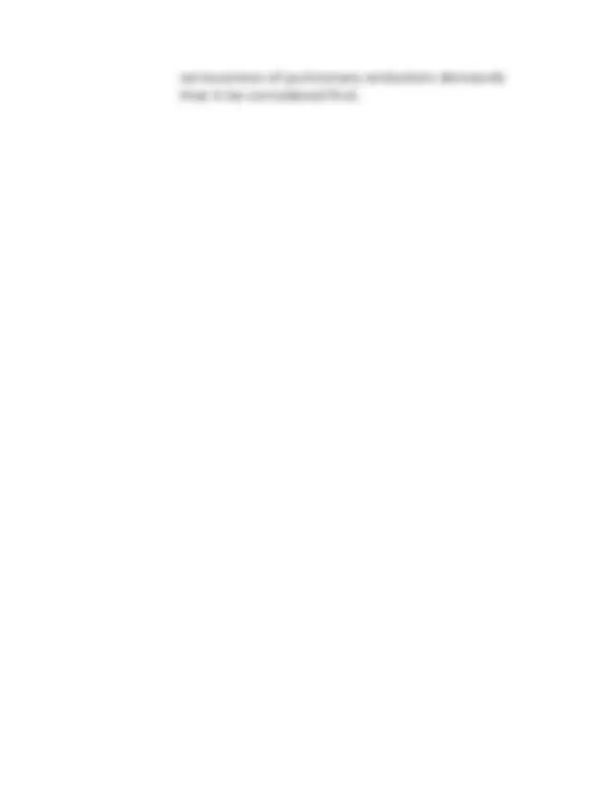
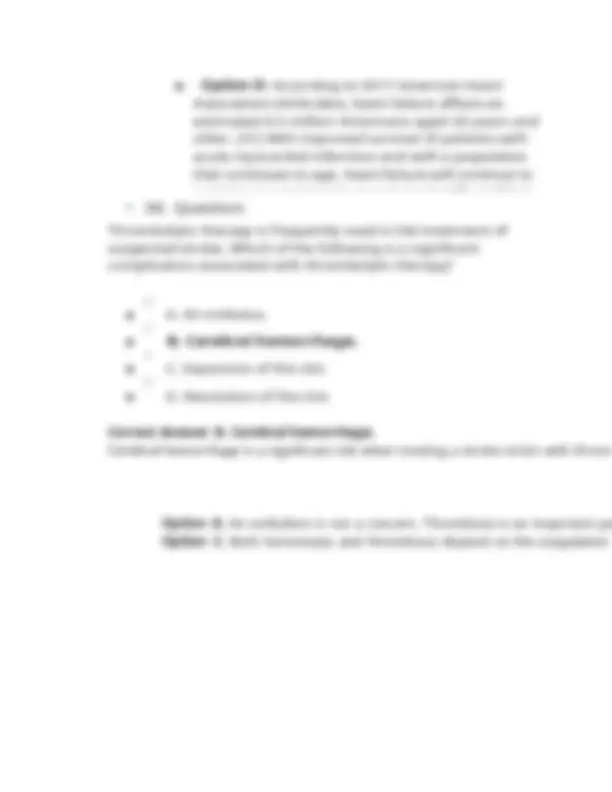
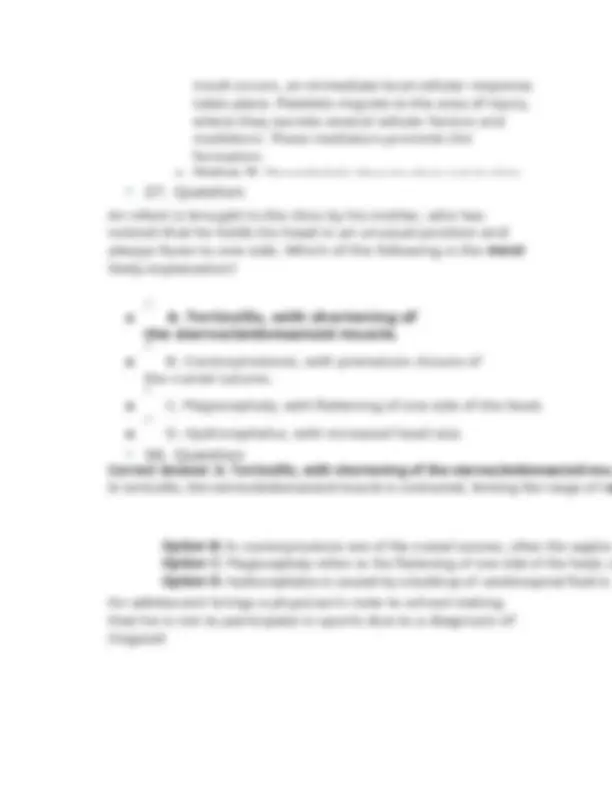
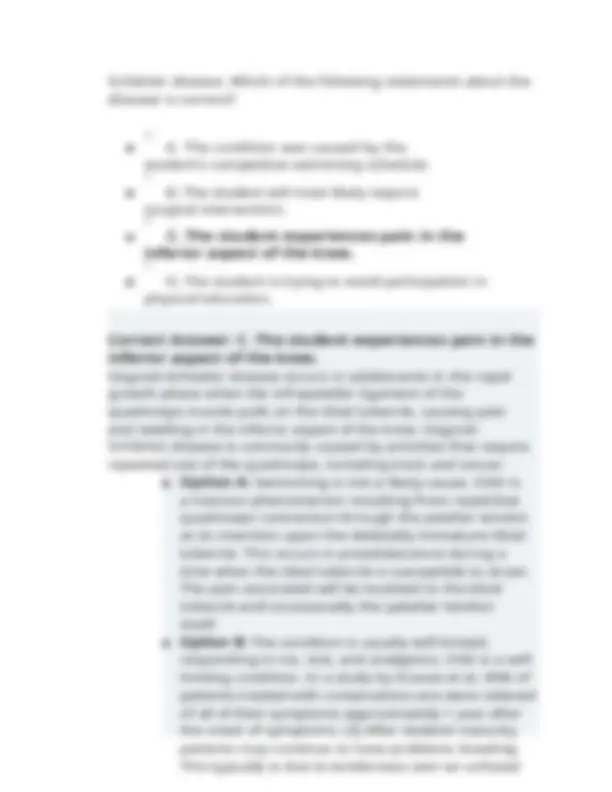
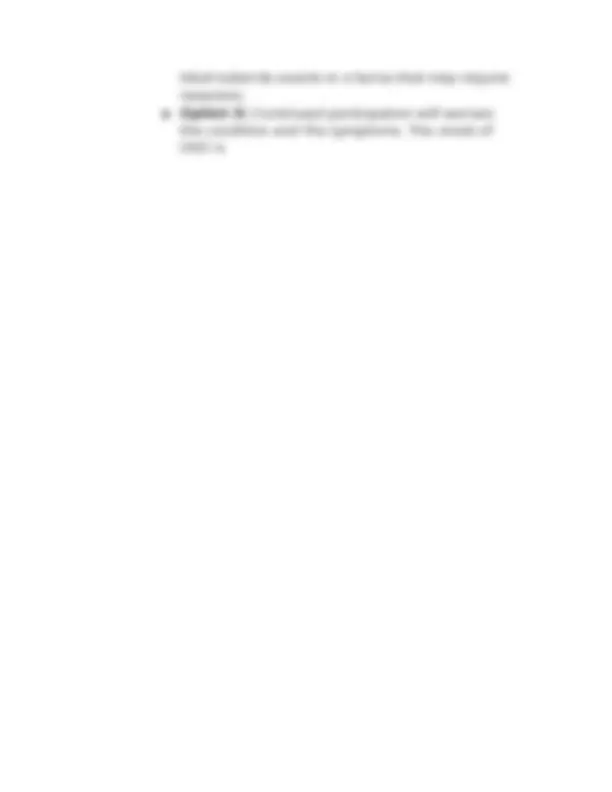
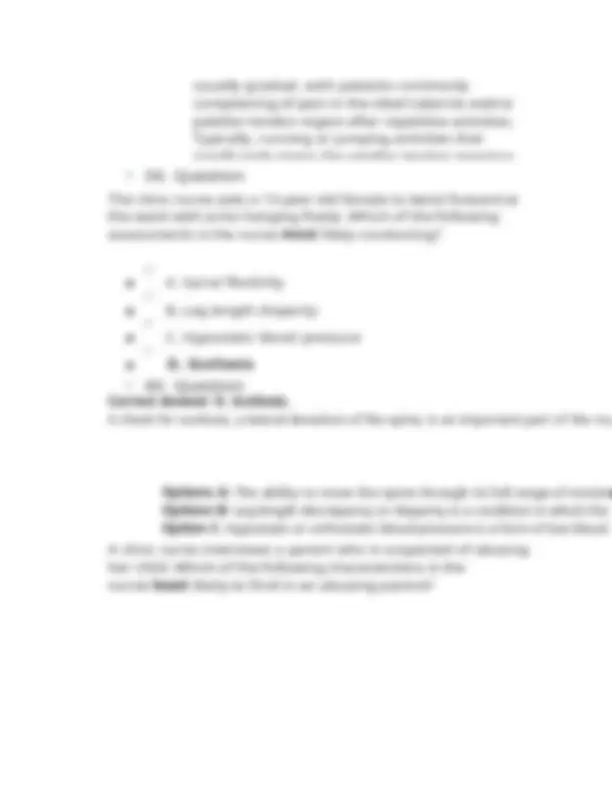
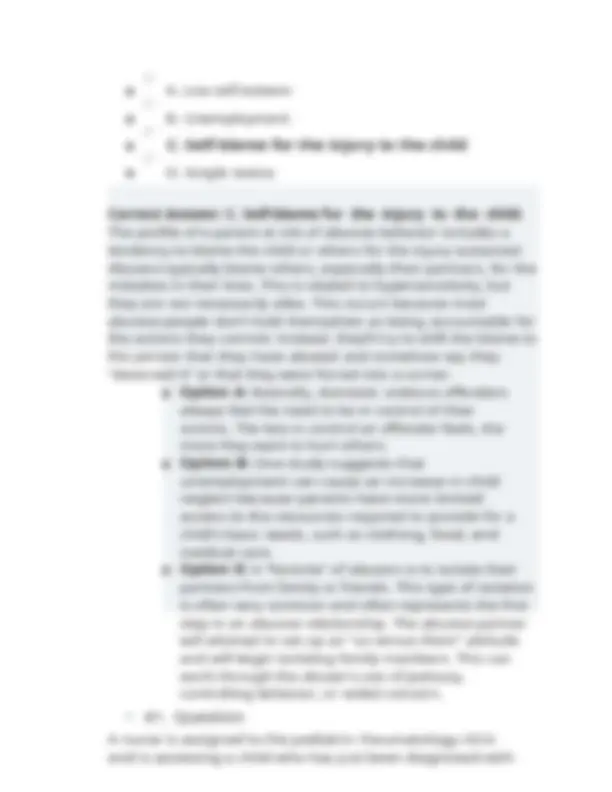
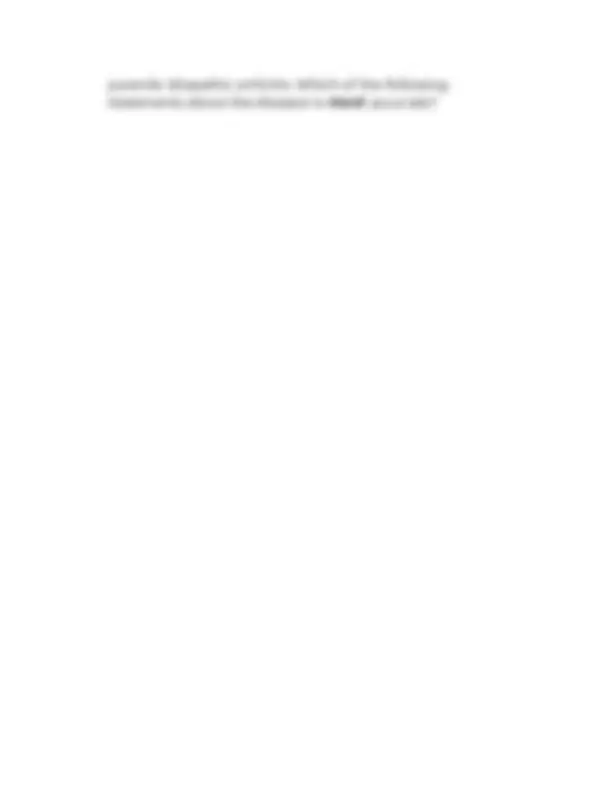
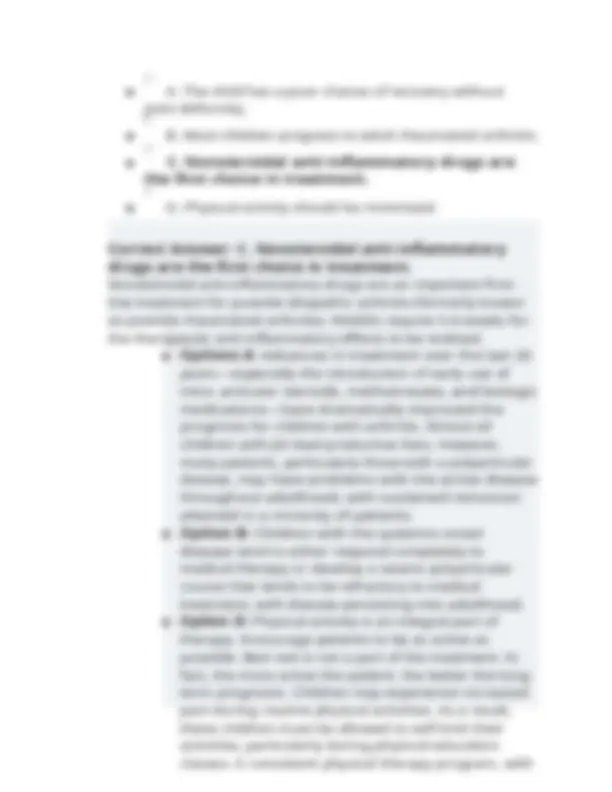
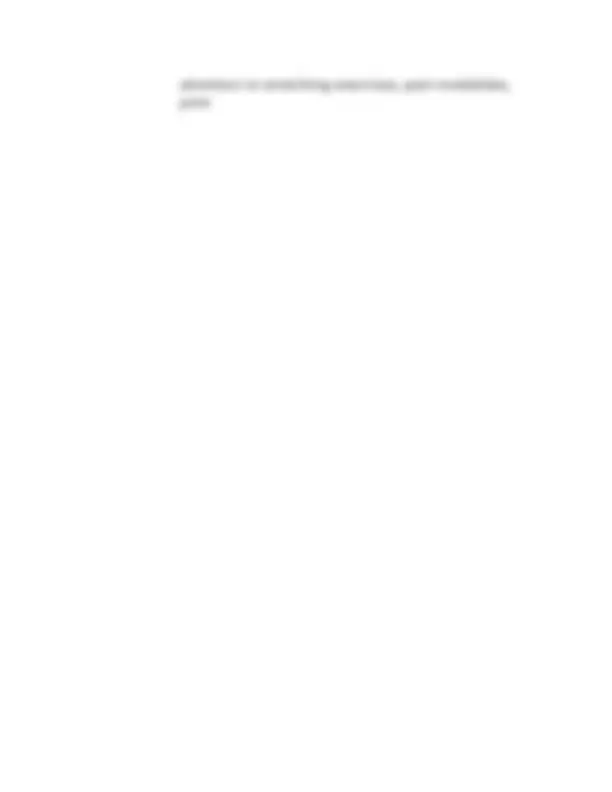
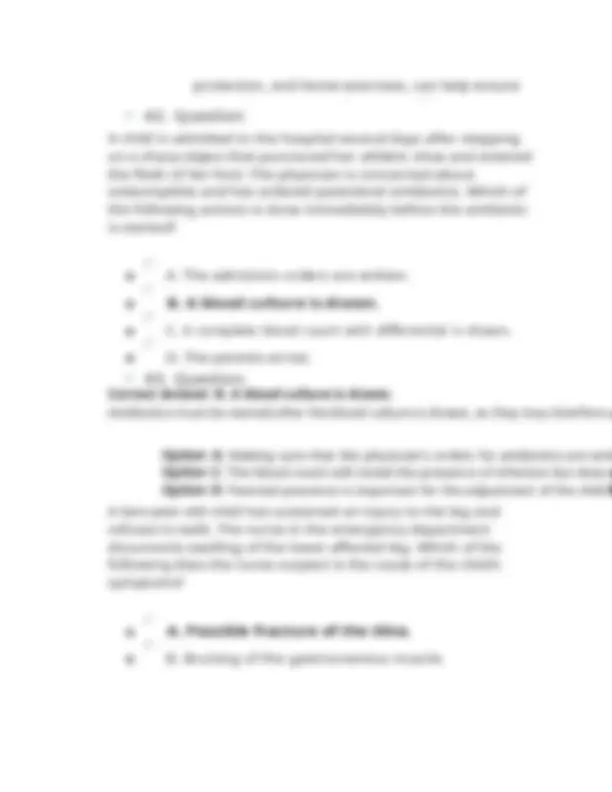
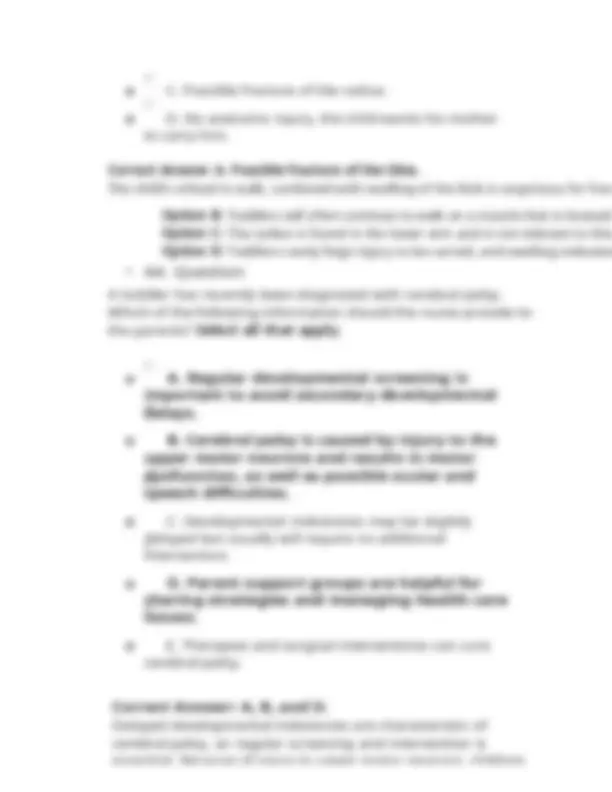
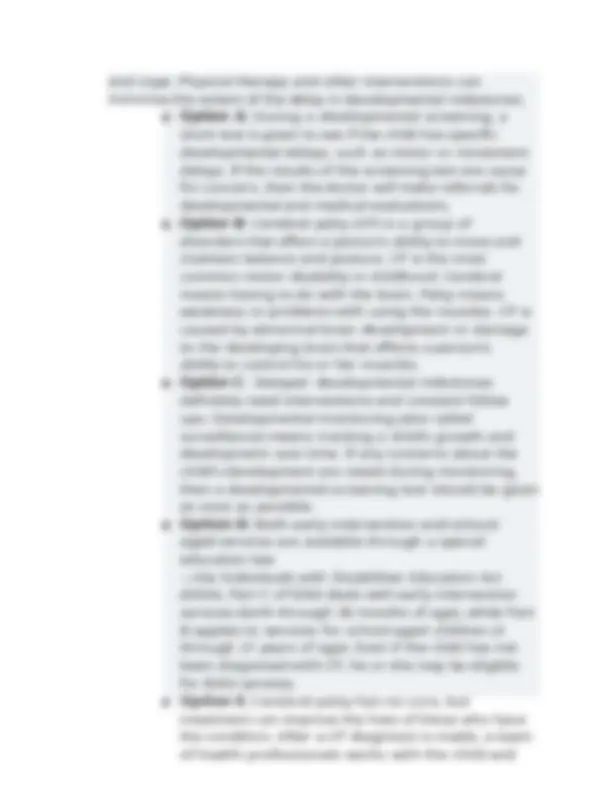
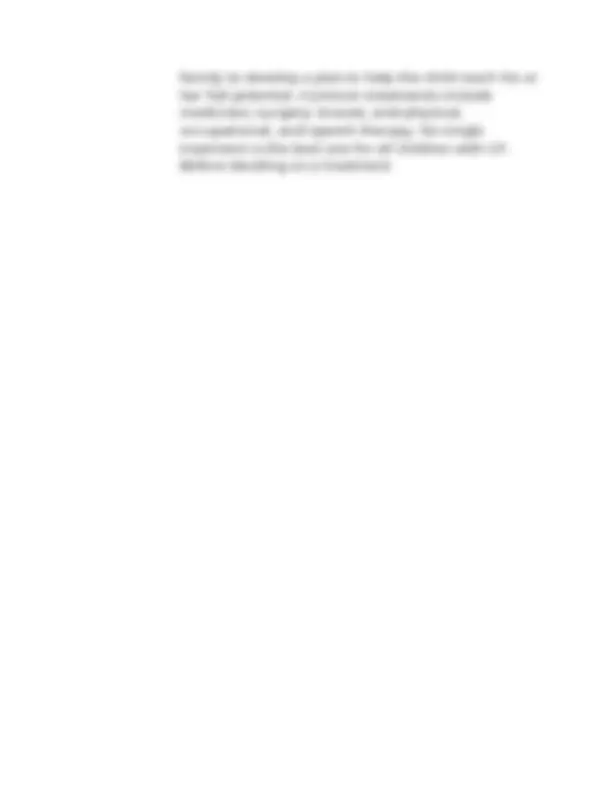
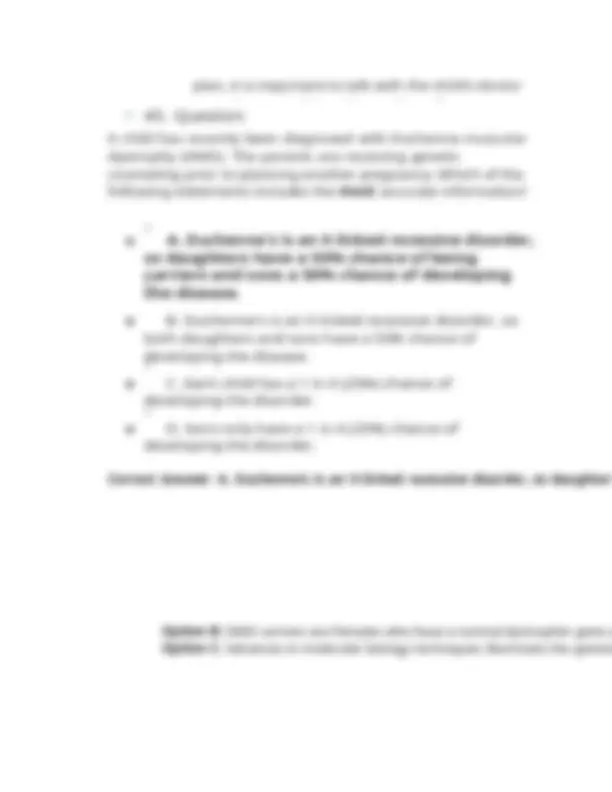
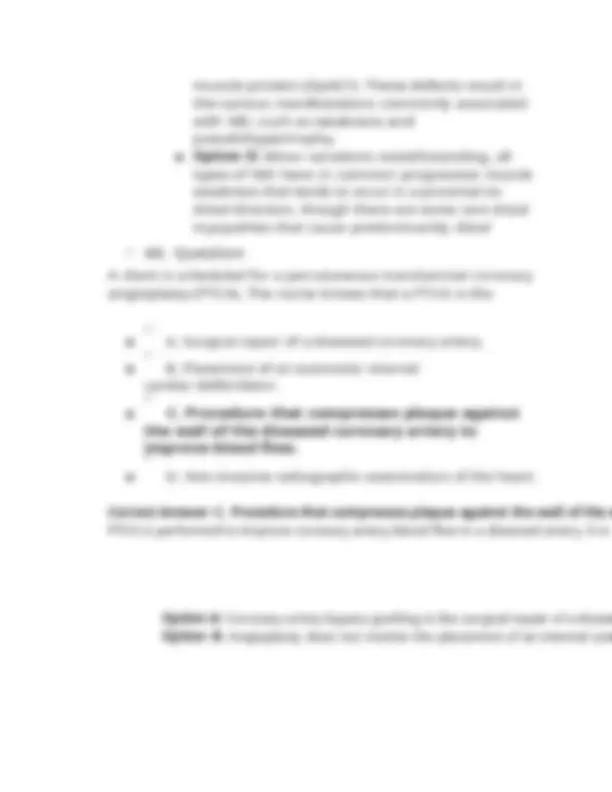
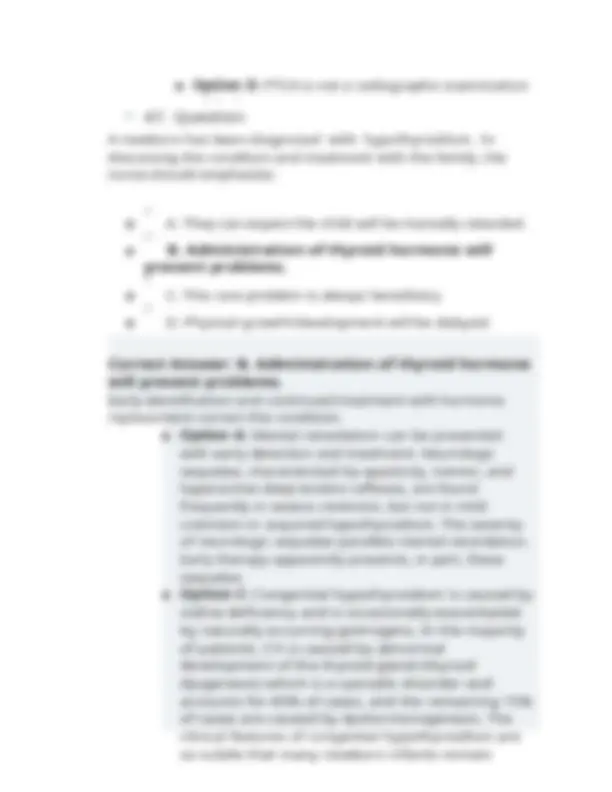
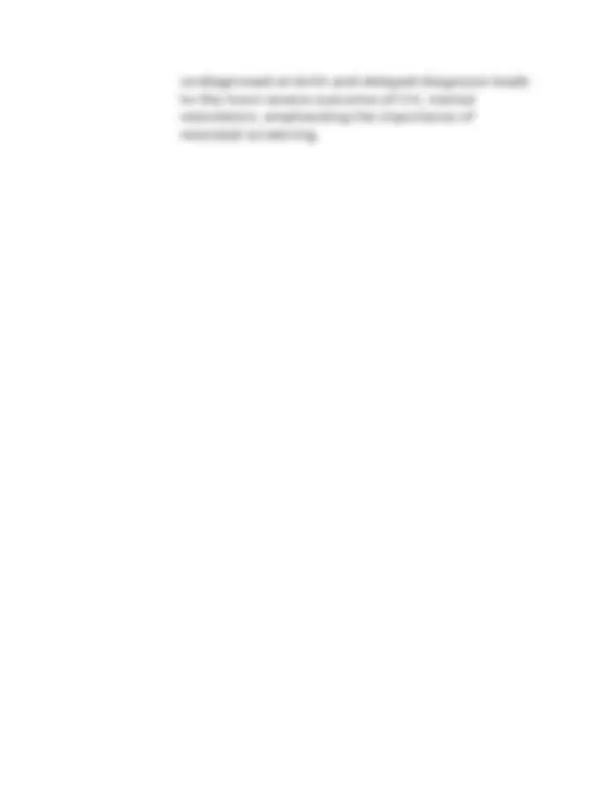
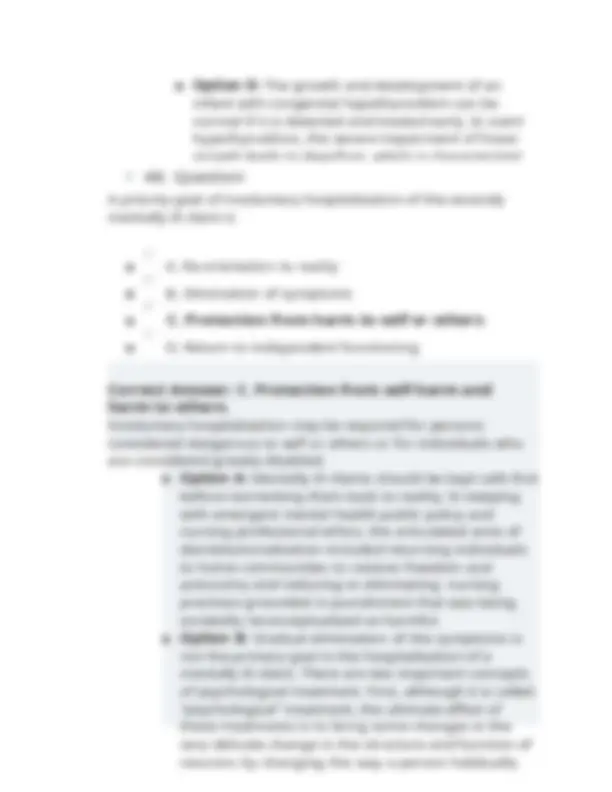
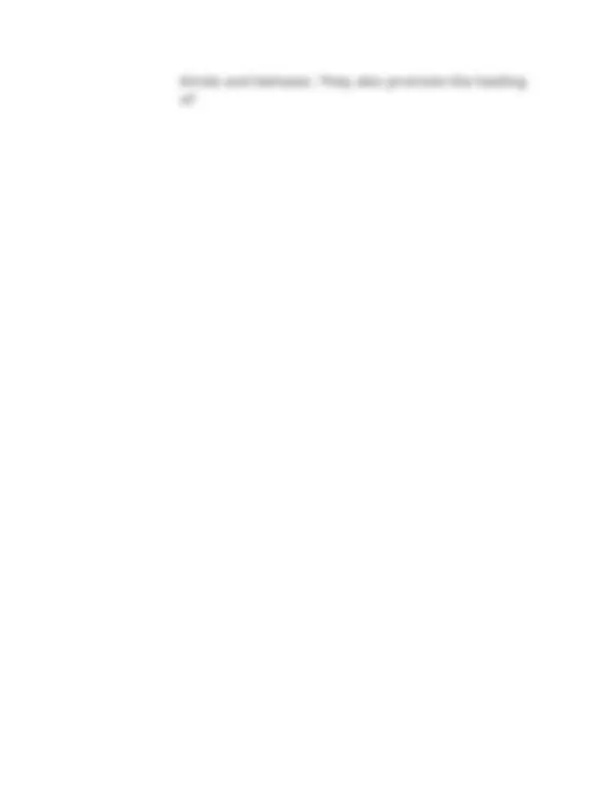
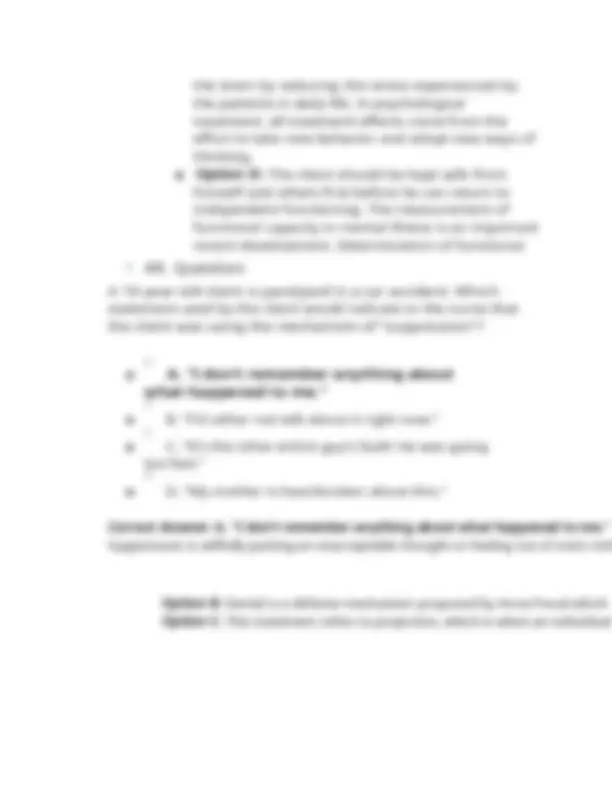
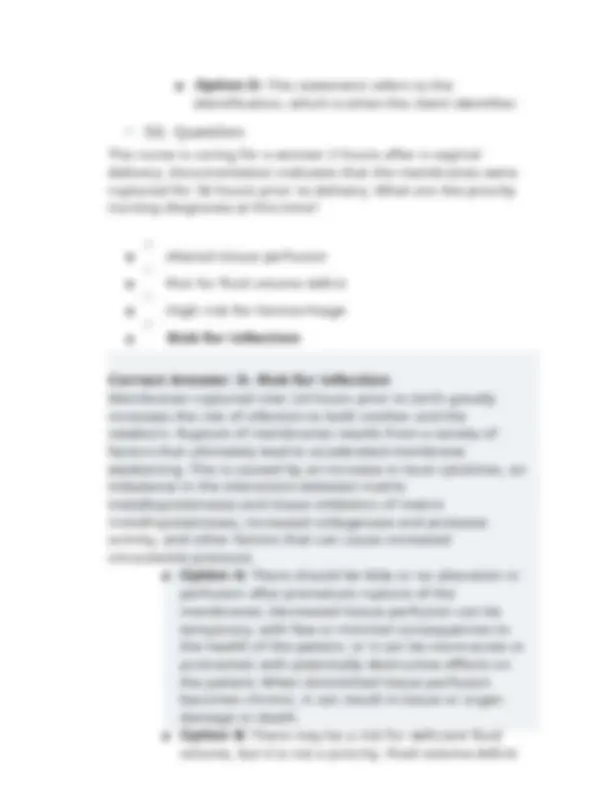
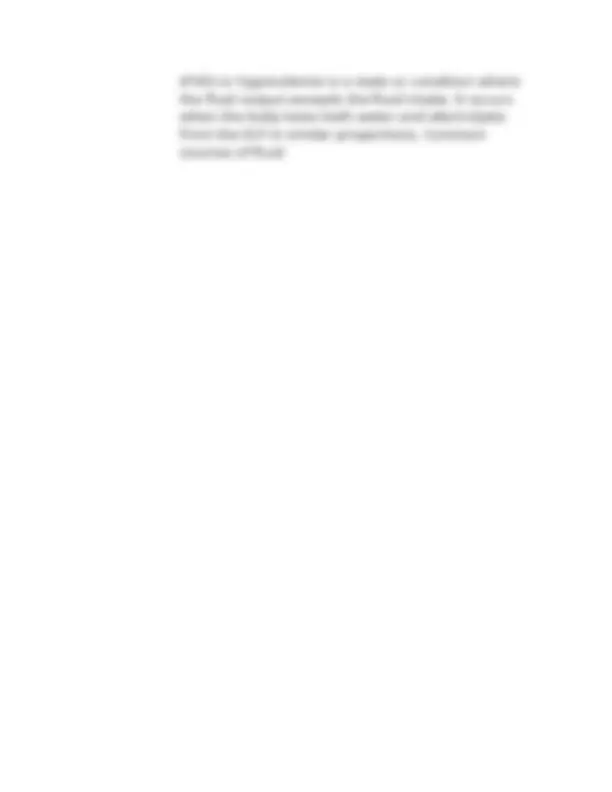
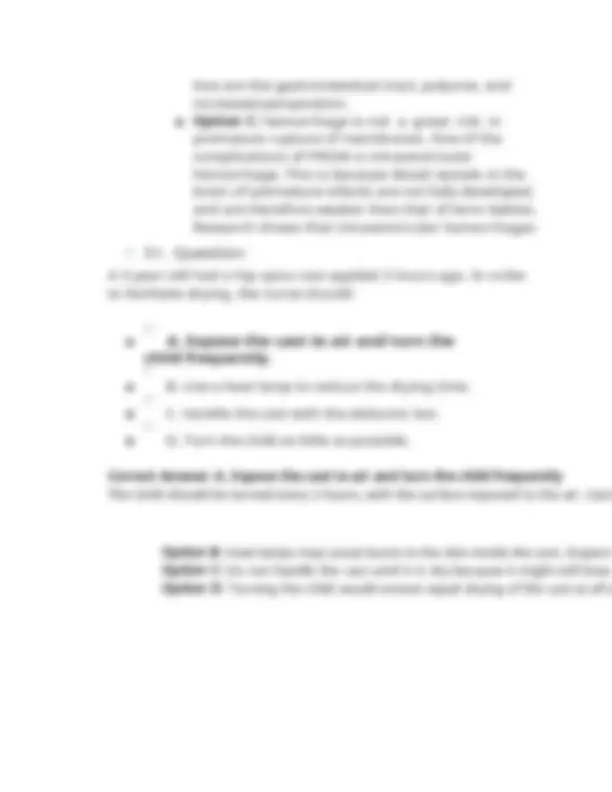
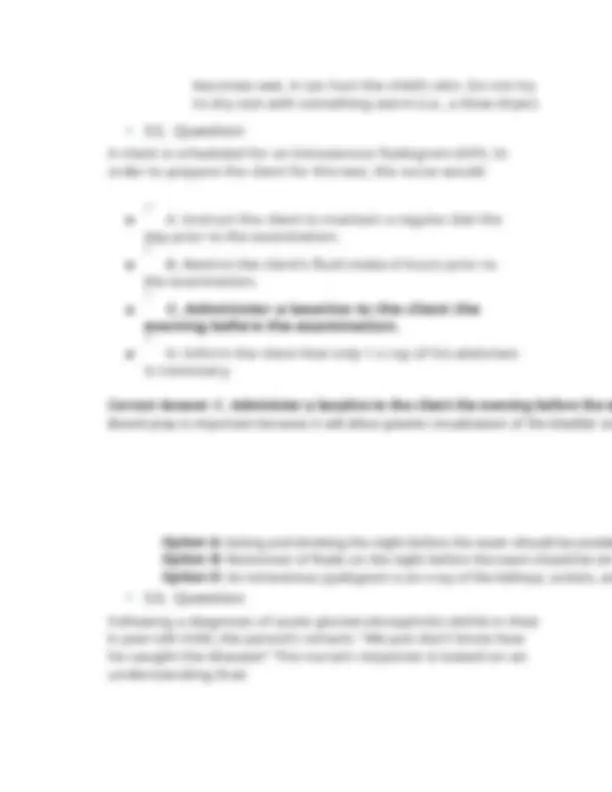
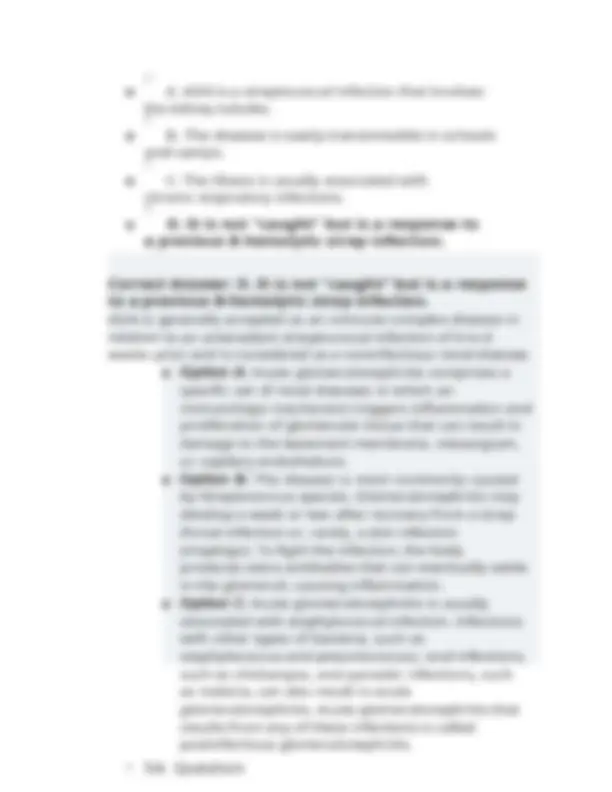
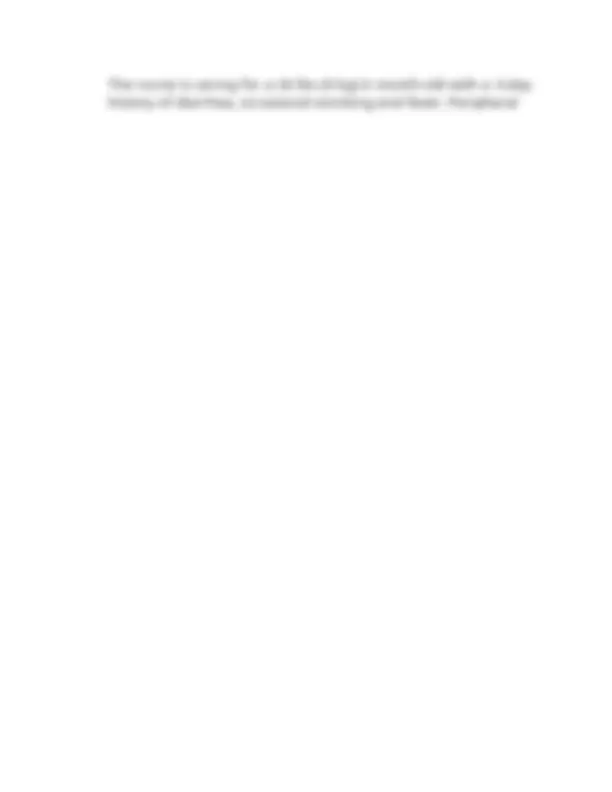
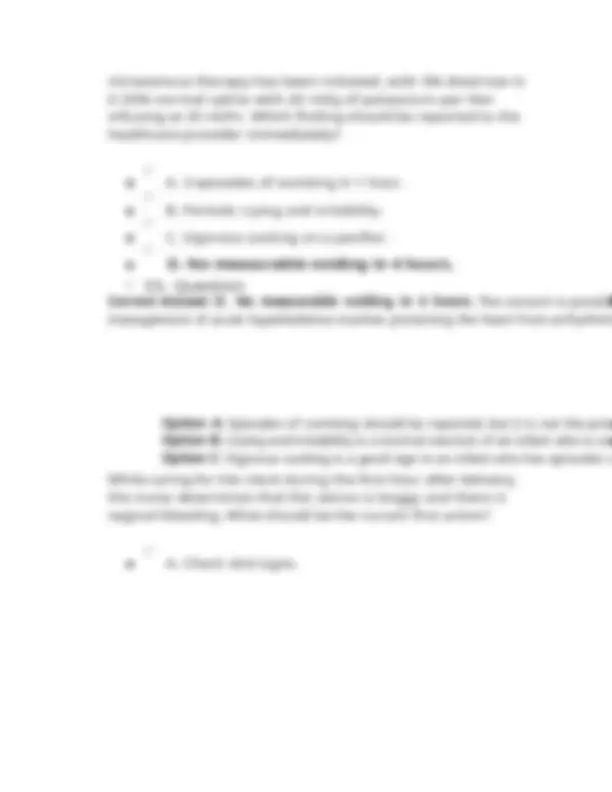
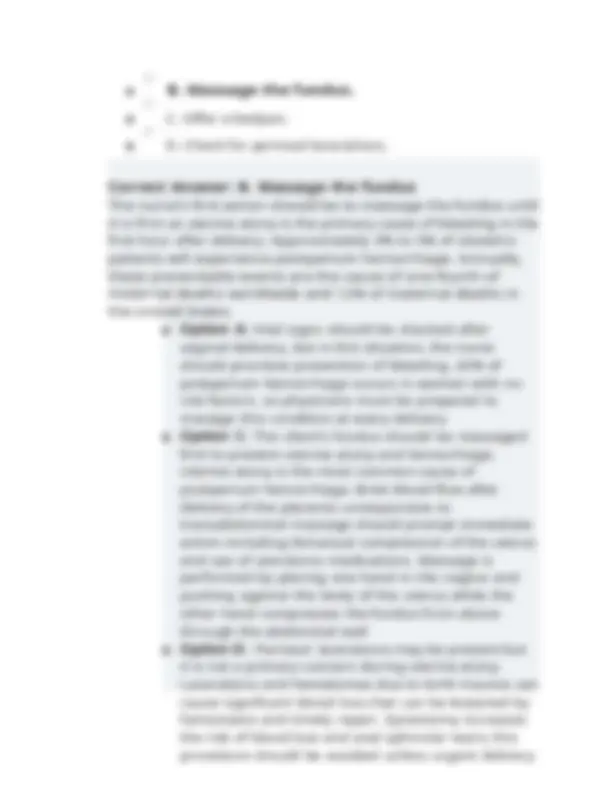
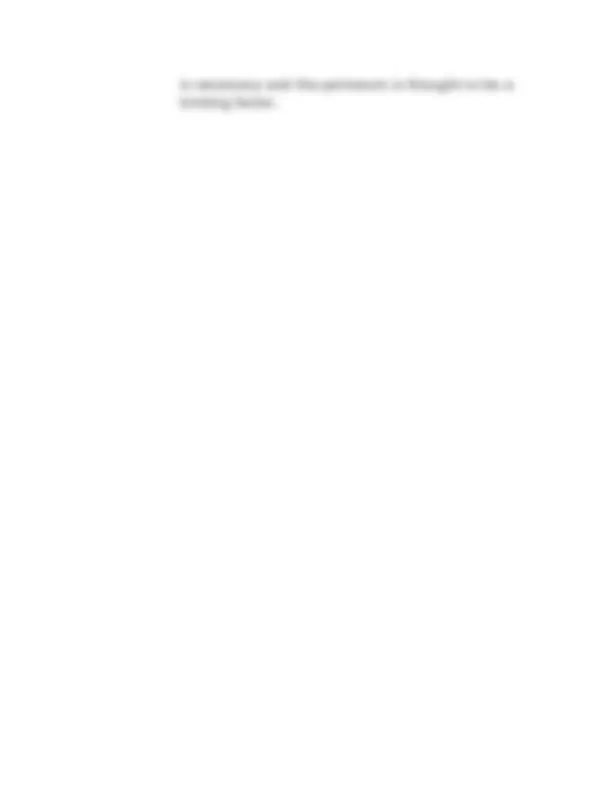
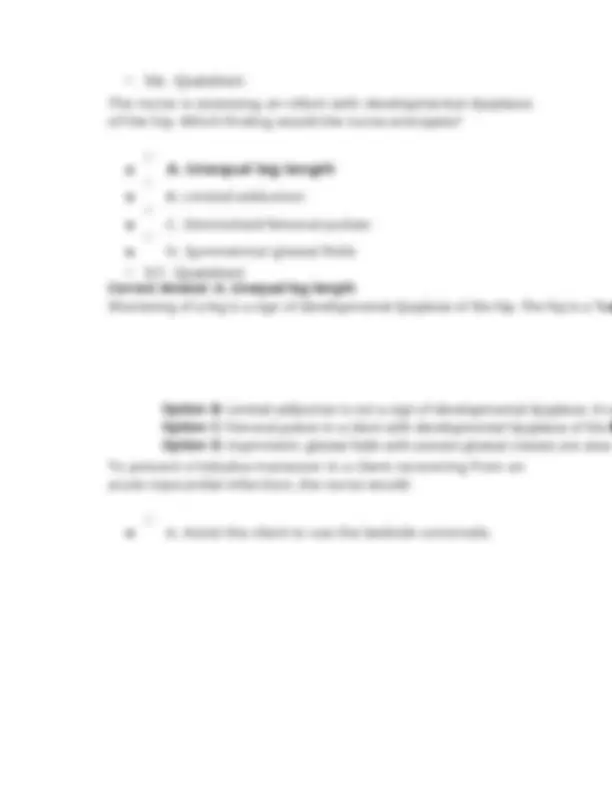
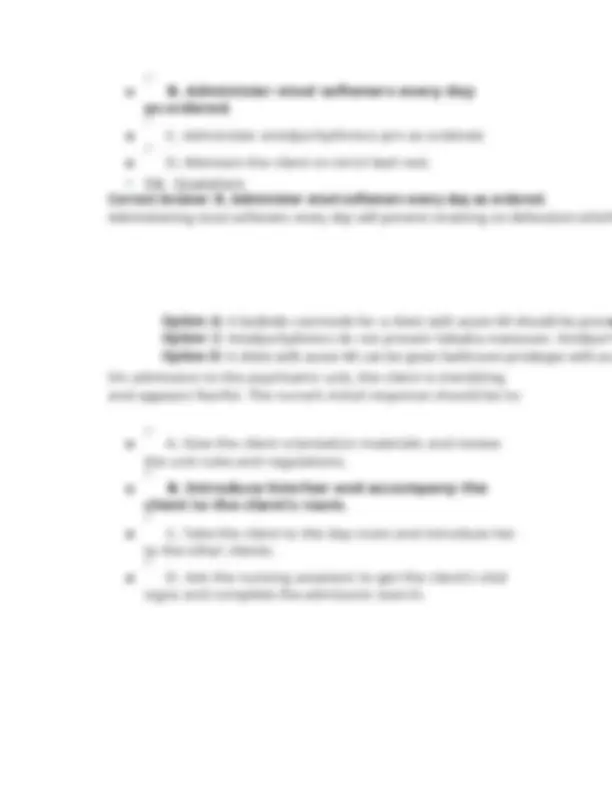
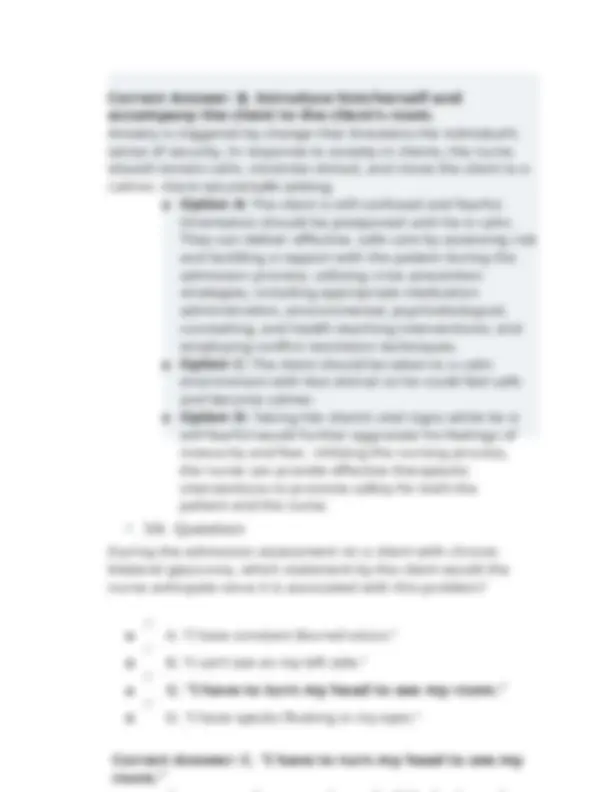
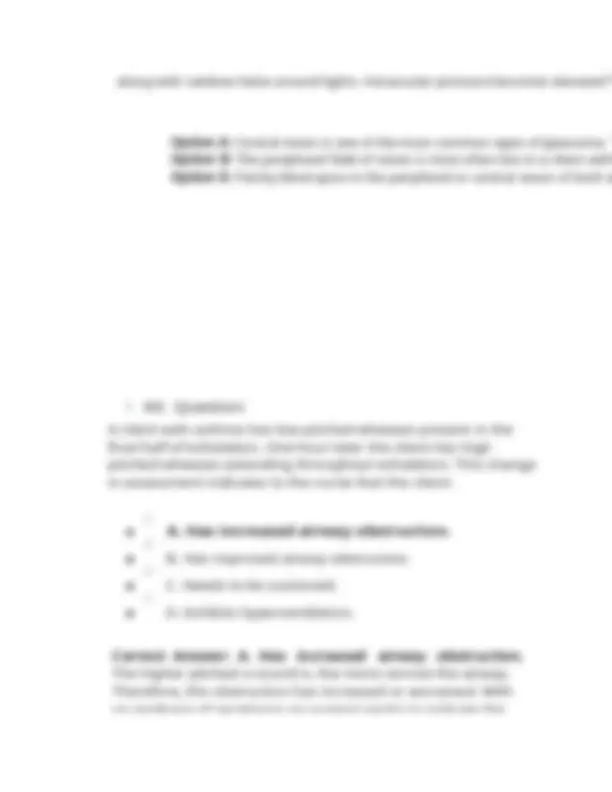
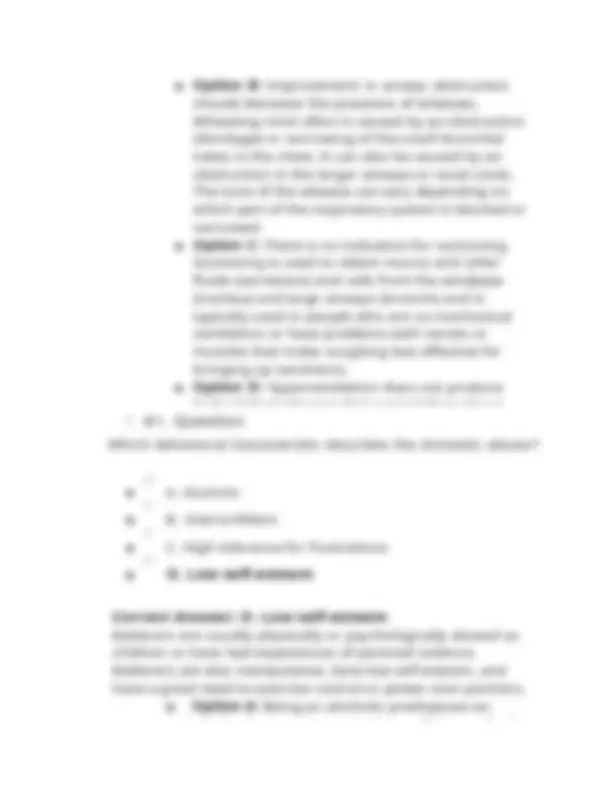
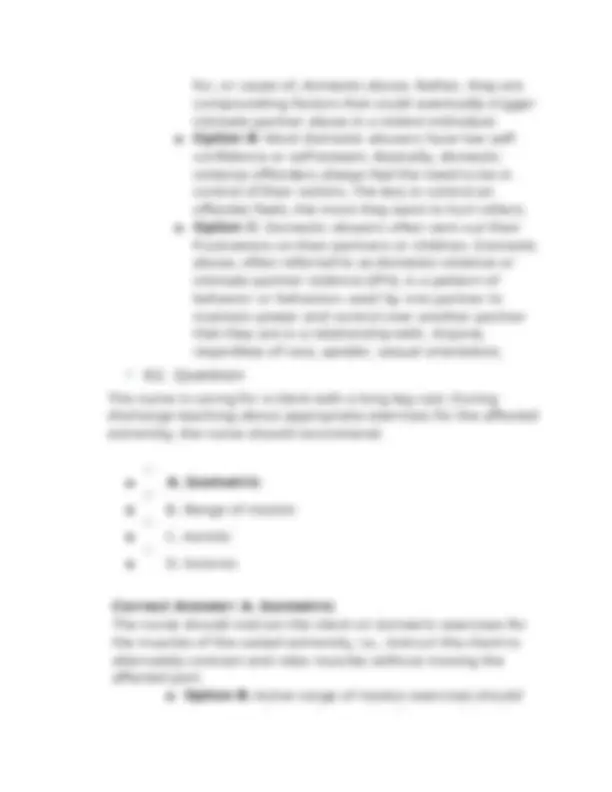
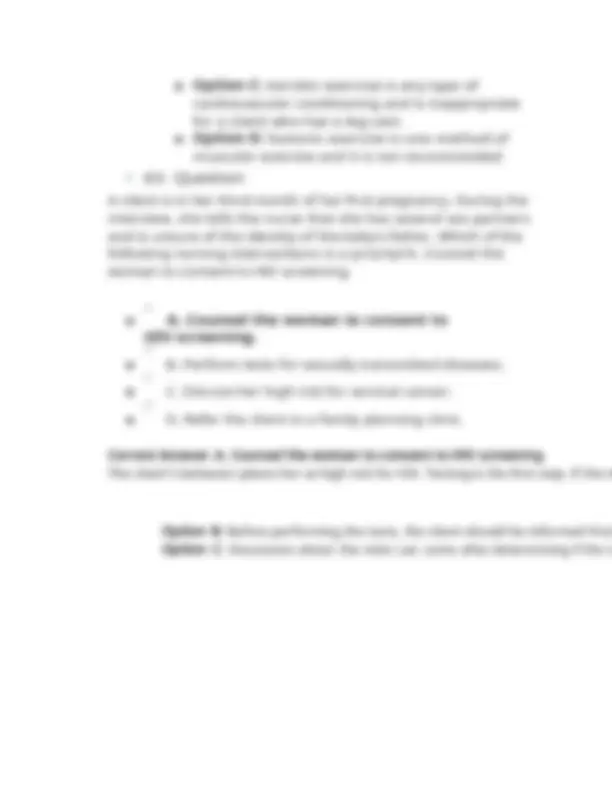
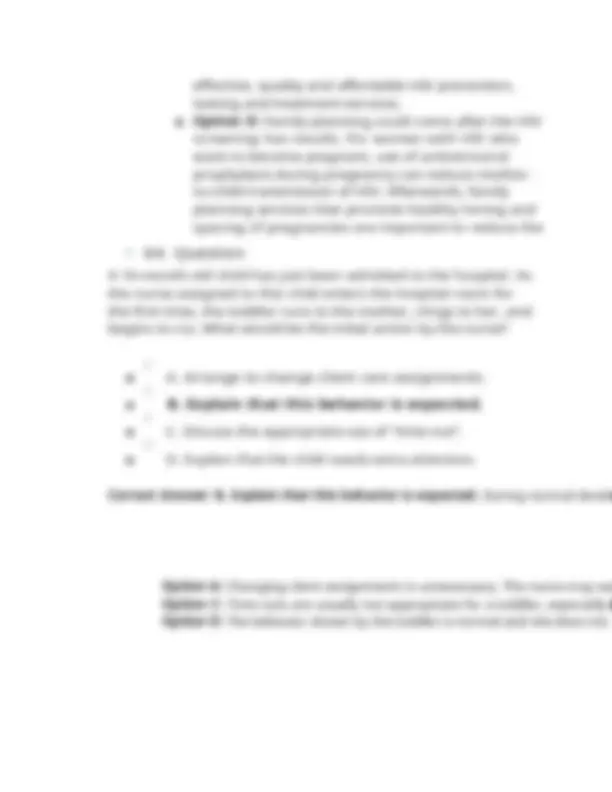
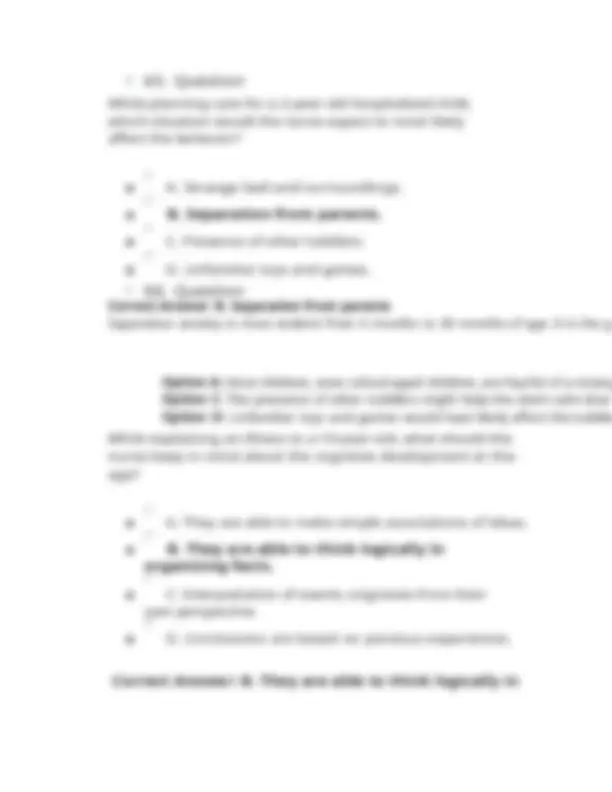
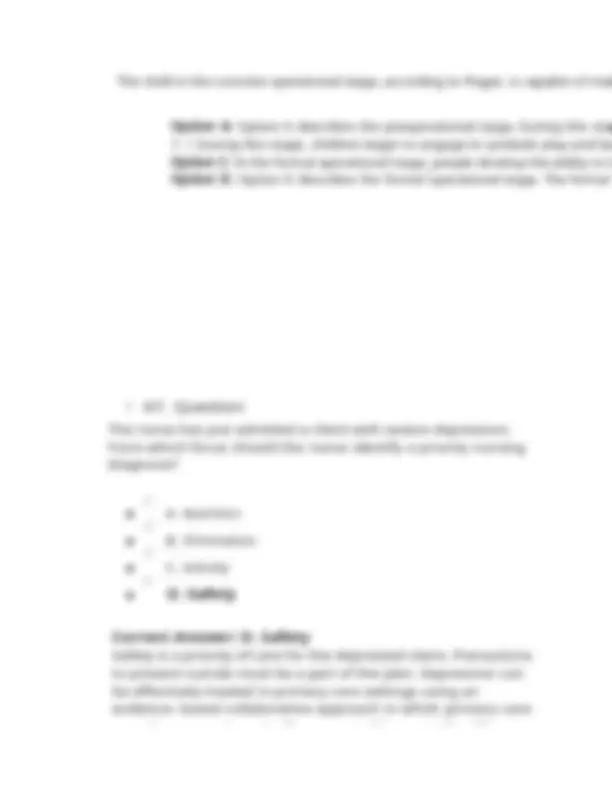
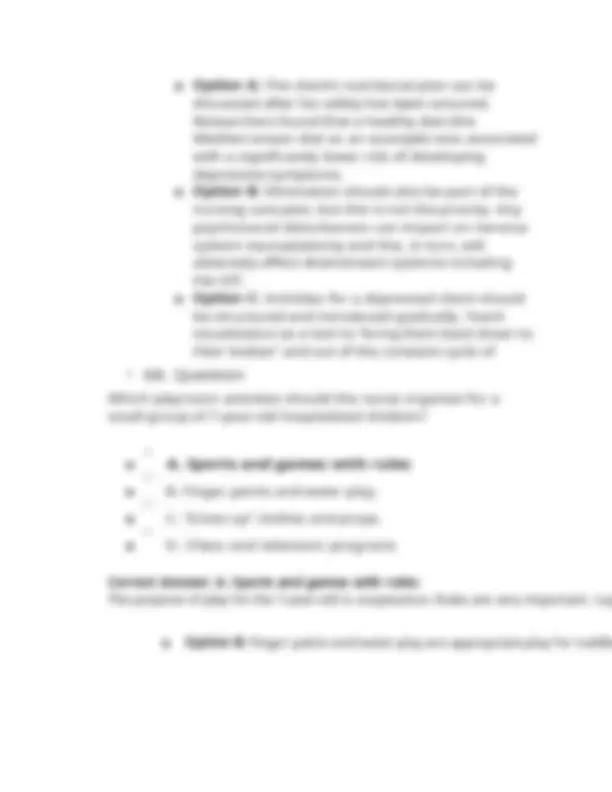
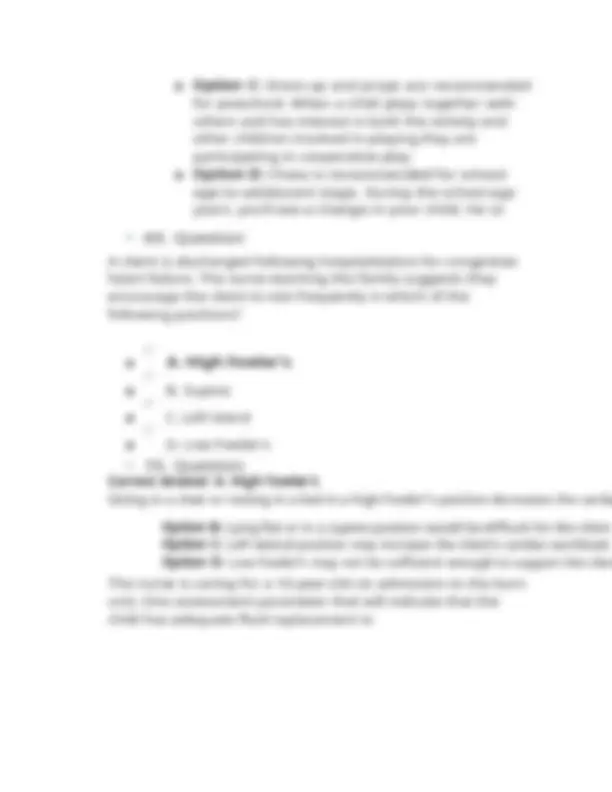
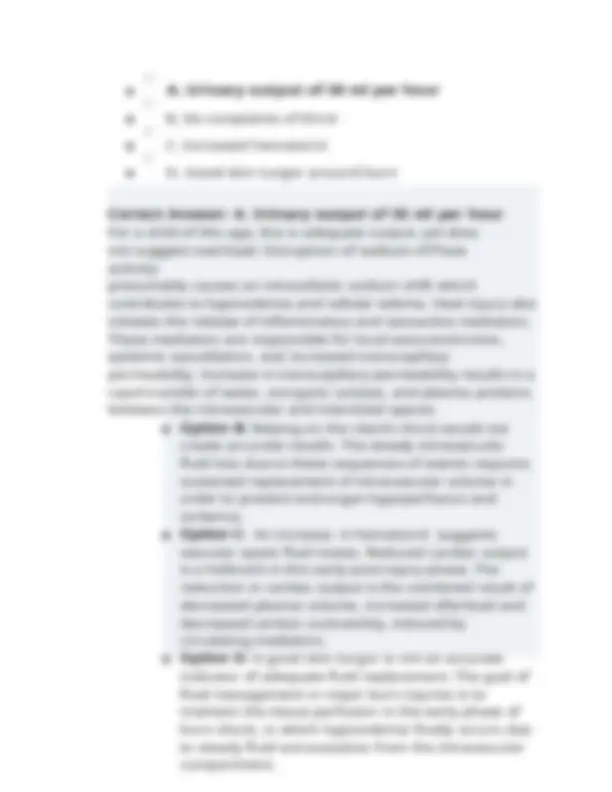
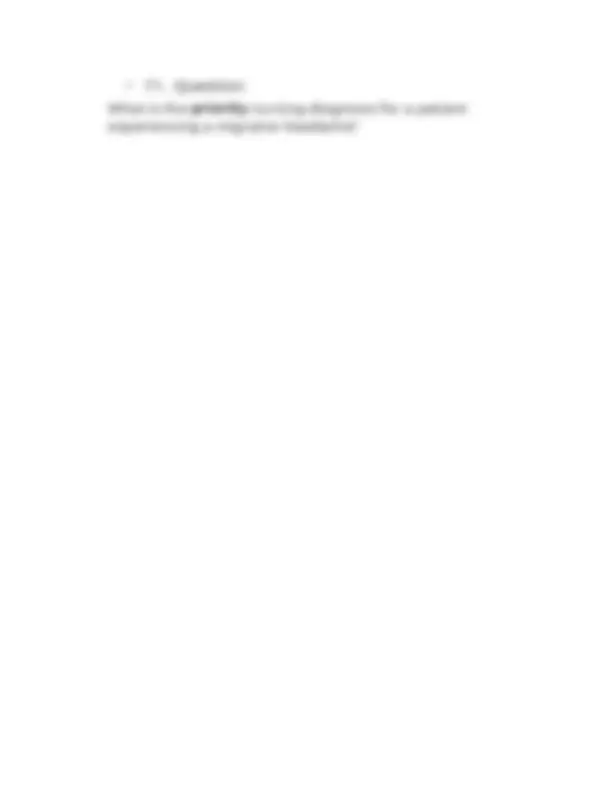
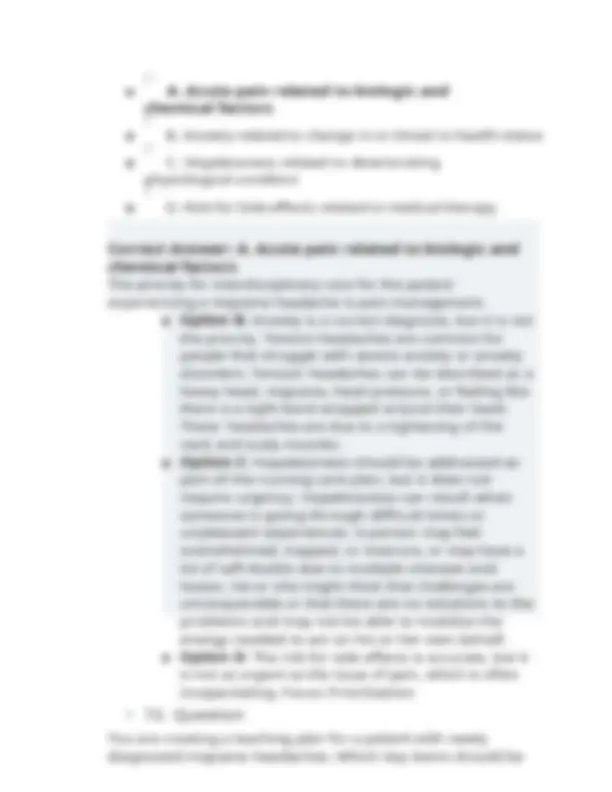
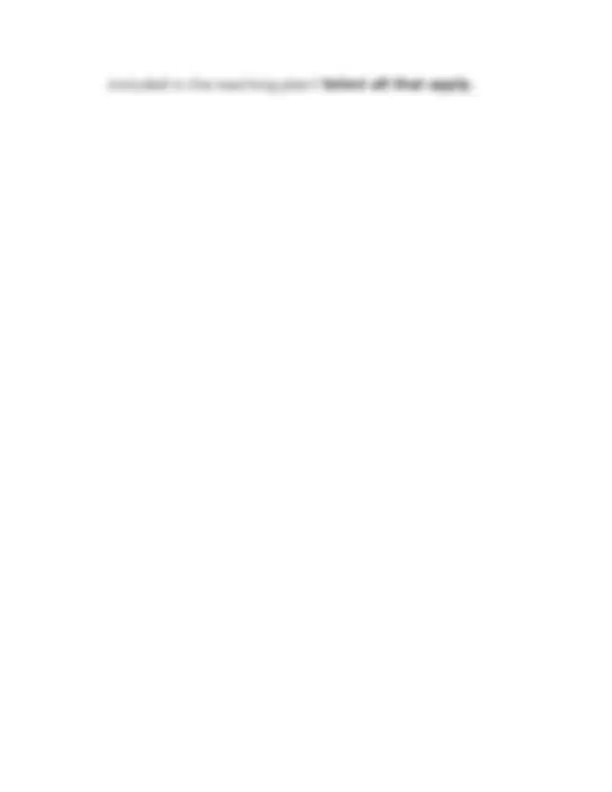
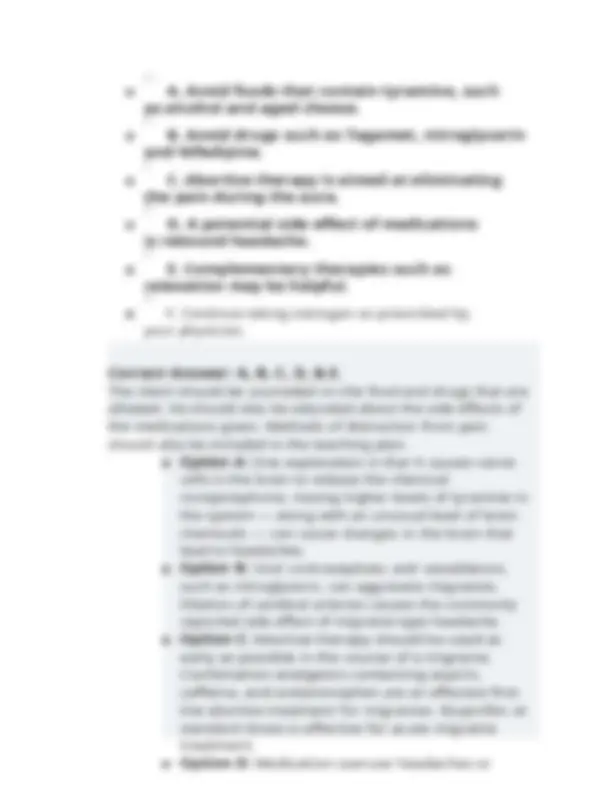
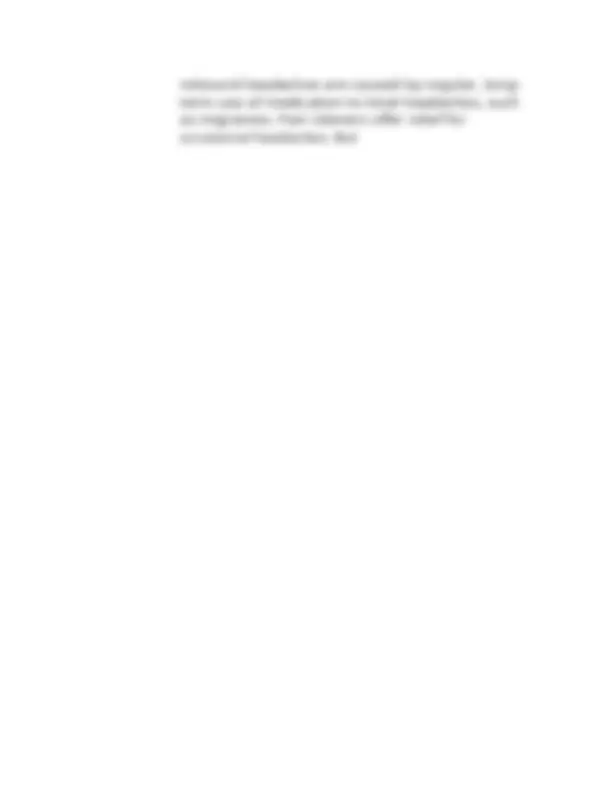
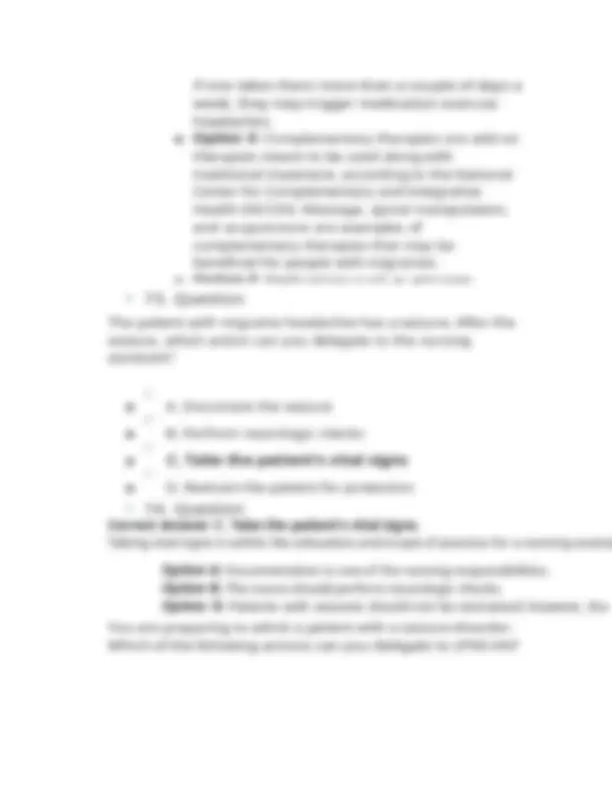
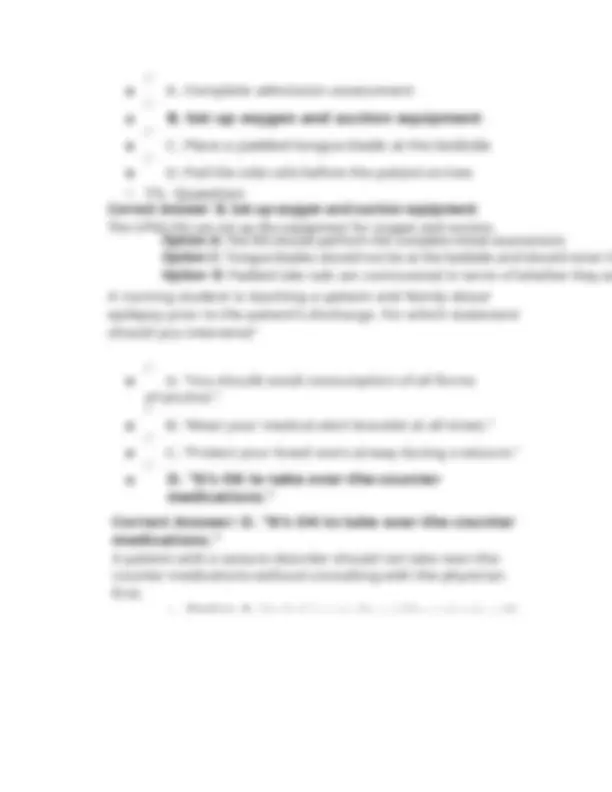
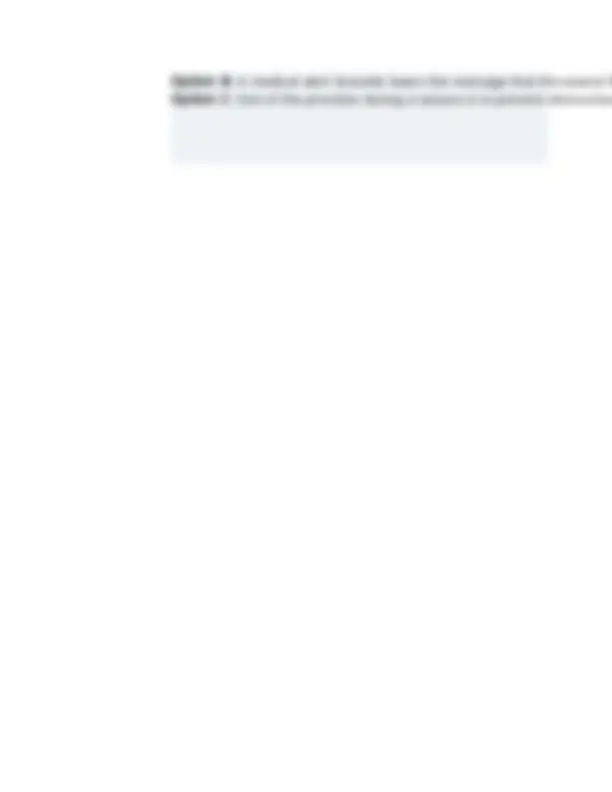


Study with the several resources on Docsity

Earn points by helping other students or get them with a premium plan


Prepare for your exams
Study with the several resources on Docsity

Earn points to download
Earn points by helping other students or get them with a premium plan
Community
Ask the community for help and clear up your study doubts
Discover the best universities in your country according to Docsity users
Free resources
Download our free guides on studying techniques, anxiety management strategies, and thesis advice from Docsity tutors
NCLEX-RN Exam Pack Set 2 (75 Questions & Answers, Latest Update 2025)
Typology: Exams
1 / 88

This page cannot be seen from the preview
Don't miss anything!

















































































A nurse was instructed by a physician to give clarithromycin (Biaxin) for a child whose BSA is 0.55 m2. The usual adult dose is 500 mg. Biaxin is available in an oral suspension. The 100ml bottle is labeled 50 mg/ml. How many ml would the nurse give per dose? Fill in the blanks. Record your answer using one decimal place. o Answer: Correct answer: (3.2) mL. o 3.2 mL. Formula: BS A Formula: BSA Formula: Rationale: o Use the BSA formula first then the standard formula as shown above. o To get the child’s dose, multiply 0.55m2(child’s BSA) to 500 mg (usual adult dose) to get 275. o Divide 275 with 1.7 m2to get 161.76 mg. o Use the standard formula above. o Divide 161.76 mg (desired pedia dose) with 50 mg (drug on hand) and multiply by 1 ml (vehicle) to get 3.2 ml.
Computation:
Option A: Ingestion of a chemical is an emergency and should not be de Option B: Taking the client to the ER may be correct, however, they will s Option D: It should not be given to someone who swallowed chemicals Correct Answer: C. Contact the Poison Control Center quickly. The poison control center will have an exact plan of action for this child. o Option A: Intramuscular injections given at the dorsogluteal and ventro Correct Answer: C. Vastus lateralis Medications are injected into the bulkiest part of the vastus lateralis thigh muscle, w
Option A: Contacting the provider is unnecessary and may take time. A p Option B: The child may have not yet developed his writing abilities. Some Option C: Asking a coworker would be inappropriate and against the pat Correct Answer: D. Ask the father who is in the room the child’s name. In this case, you can determine the name of the child by the father’s statement. You
diet advice. Which of the following diet modifications is not recommended? o A. A diet high in grains
Option A: A well-balanced diet is the best way to keep the body healthy a Option B: High-calorie comfort food reduces symptoms of neuroglycopen Option C: Healthy fats and high-quality proteins slow the blood sugar rol Correct Answer: D. A restricted sodium diet A patient with Addison’s disease requires normal dietary sodium to prevent excess o B. A diet with adequate caloric intake o C. A high protein diet o D. A restricted sodium diet
o D. Diverticulitis
Correct Answer: A. Bowel perforation Bowel perforation is the most serious complication of fiberoptic colonoscopy. Important signs include progressive abdominal pain, fever, chills, and tachycardia, which indicate advancing peritonitis. One of the most serious complications of colonoscopy is endoscopic perforation of the colon, which has been reported as between 0.03% and 0.7%. Although colonoscopic perforation (CP) occurs rarely, it can be associated with high mortality and morbidity rates. o Option B: Viral gastroenteritis is a known cause of nausea, vomiting, diarrhea, anorexia, weight loss, and dehydration. Isolated cases can occur, but viral gastroenteritis more commonly occurs in outbreaks within close communities such as daycare centers, nursing facilities, and cruise ships. Many different viruses can lead to symptomatology, though in routine clinical practice the true causative virus is generally not identified. o Option C: If the patient is age 50 or older and at average risk of colon cancer — he has no colon cancer risk factors other than age — the doctor may recommend a colonoscopy every 10 years or sometimes sooner to screen for colon cancer. Colonoscopy is one option for colon cancer screening. o Option D: Diverticulitis may cause pain, fever, and chills, but is far less serious than perforation and peritonitis.
Correct Answer: A. A history of hepatitis C five years previously Hepatitis C is a viral infection transmitted through bodily Option A: Hepatitis B infection, caused by the hepatitis B virus (HBV), is c Option C: Before widespread screening of the blood supply in 1992, he Option D: Today, most people become infected with hepatitis B, C, or D Hepatitis A is the only type that is transmitted by the fecal-oral route through con
Option B: Cholecystitis is the inflammation of the gallbladder. This cond Option C: Diverticulosis is when pockets called diverticula form in the wa Option D: Crohn’s disease is an inflammatory bowel disease. It causes i hepatitis C may not donate blood for transfusion due to the high risk of infection o Option B: Calcium carbonate is used as an antacid for the relief of ind Correct Answer: A. Naproxen sodium (Naprosyn) Naproxen sodium is a nonsteroidal anti-inflammatory drug that can cause inflamm
o D. The patient should limit fatty foods.
Correct Answer: D. Air hunger Patients with pulmonary edema experience air hunger, anxiety, and agitation. Symptoms may also include coughing Correct Answer: D. The patient should limit fatty foods. Cholecystitis, inflammation of the gallbladder, is most commonly caused by the presence of gallstones, which may block bile (necessary for fat absorption) from entering the intestines. Patients should decrease dietary fat by limiting foods like fatty meats, fried foods, and creamy desserts to avoid irritation of the gallbladder. o Option A: The patient may maintain a moderate to a high-calorie diet, as a very low-calorie diet may increase the risk for gallstones that predisposes to cholecystitis. o Option B: Both animal fat and animal protein may contribute to the formation of gallstones. Vitamin C, which is abundant in plants and absent from meat affects the rate-limiting step in the catabolism of cholesterol to bile acids and is inversely related to the risk of gallstones and cholecystitis. Individuals consuming the most refined carbohydrates have a 60% greater risk for developing gallstones, compared with those who consumed the least. o Option C: Replacing sugary drinks with drinks high in fiber would reduce the risk of gallbladder stones by 15%.
Option A: A patient with myocardial infarction that resolved with no per Option B: A patient recovering well from coronary bypass would not ne Option D: Atrial tachycardia is less serious and is treated conservatively w patient with significant ventricular symptoms, such as tachycardia resulting in syn Option A: Shellfish/iodine allergy is not a contraindication because the co Options C: Open MRI scanners and anti-anxiety medications are availab Correct Answer: B. The patient has a pacemaker The implanted pacemaker will interfere with the magnetic fields of the MRI scanner
Correct Answer: B. The patient suddenly complains of chest pain and shortness of breath. Typical symptoms of pulmonary embolism include chest pain, shortness of breath, and severe anxiety. The physician should be notified immediately. Clinical signs and symptoms for pulmonary embolism are nonspecific; therefore, patients suspected of having pulmonary embolism—because of unexplained dyspnea, tachypnea, or chest pain or the